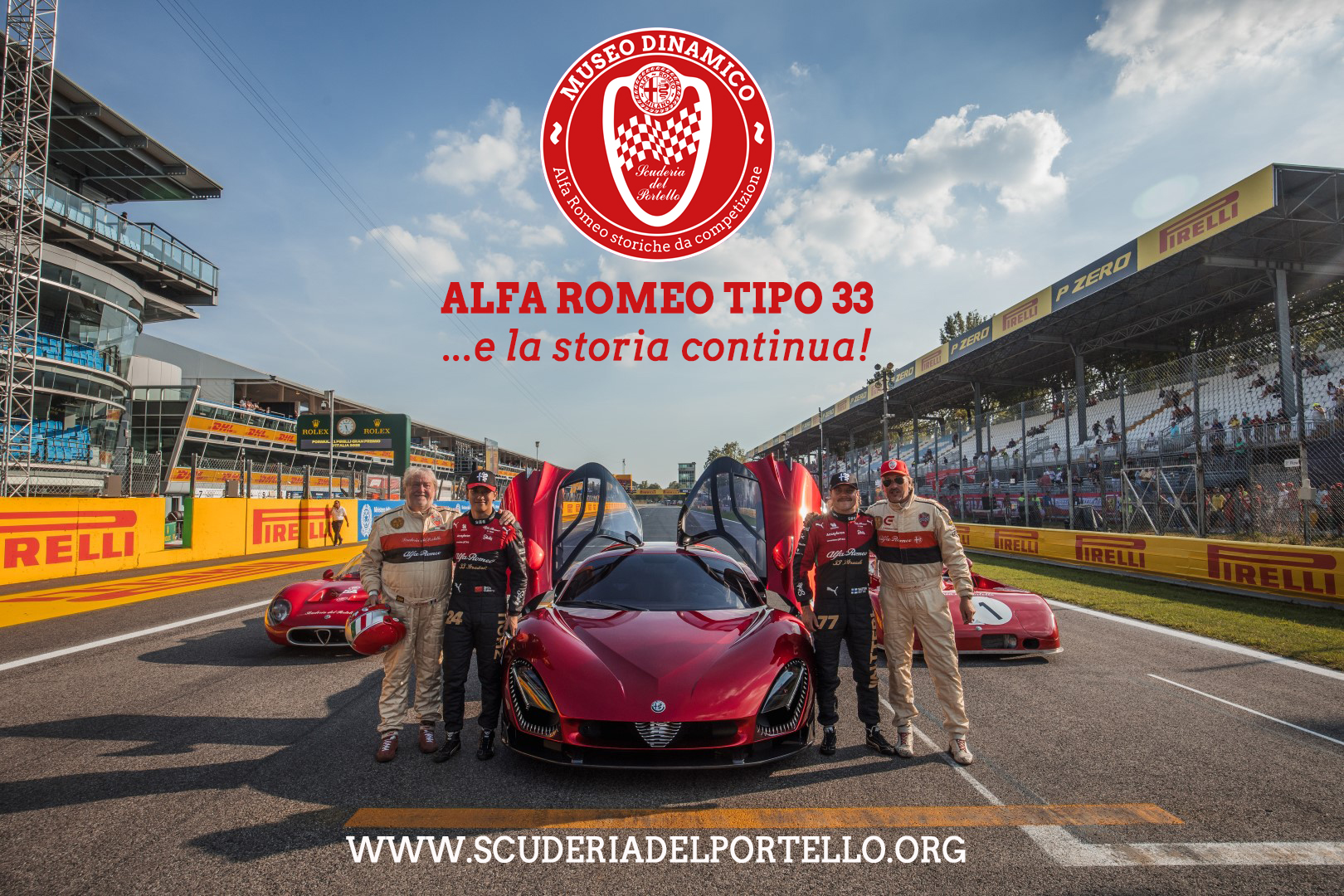
GRAN PREMIO D’ITALIA FORMULA ONE
AUTODROMO NAZIONALE MONZA – 2nd September 2023
On the occasion of the 2023 Formula One Italian Grand Prix (31 August – 3 September), Alfa Romeo presented the new ‘fuoriserie’ 33 Stradale, inspired by the historic model that was unveiled precisely at the Autodromo Nazionale Monza on 31 August 1967 on the occasion of that year’s GP.
It is the return of a legendary icon of the 1960s, considered by many to be one of the most beautiful cars ever, and derived directly in chassis and mechanics from the Type 33/2 ‘Periscopica’ that was the star of world motorsport and which began the Alfa Romeo sports marque’s epic of victories and successes in world competition with the successive Prototype 33s.
After the presentation at the Museo Storico di Arese, the new 33 Stradale took to the track in the ‘Temple of Speed’, driven by F1 driver Valtteri Bottas flanked by team-mate Guanyu Zhou, in the presence of Alfa Romeo CEO J.P. Imparato, Alfa Romeo F1 Team Representative Alessandro Alunni Bravi, Formula 1 CEO Stefano Domenicali, and the car’s entire design team led by Cristiano Fiorio and designer Alejandro Mesonero-Romanos.
Legends find their identity in history and the Scuderia del Portello, on the occasion of this memorable world preview, has made an important contribution by lining up alongside the new 33 Stradale the historic Alfa Romeo Tipo 33s from its ‘Dynamic Museum’. These include the 33/2 001 ‘Flèron’ or ‘Periscopica’ from 1967, the mother of the 33 Stradale and all Type 33s, and the 33TT3 001 from 1971, created for the Targa Florio and subsequently a protagonist on the world’s most prestigious circuits at the time.
We tell the story of these two extraordinary historic Tipo 33s and the fledgling 33 Stradale.
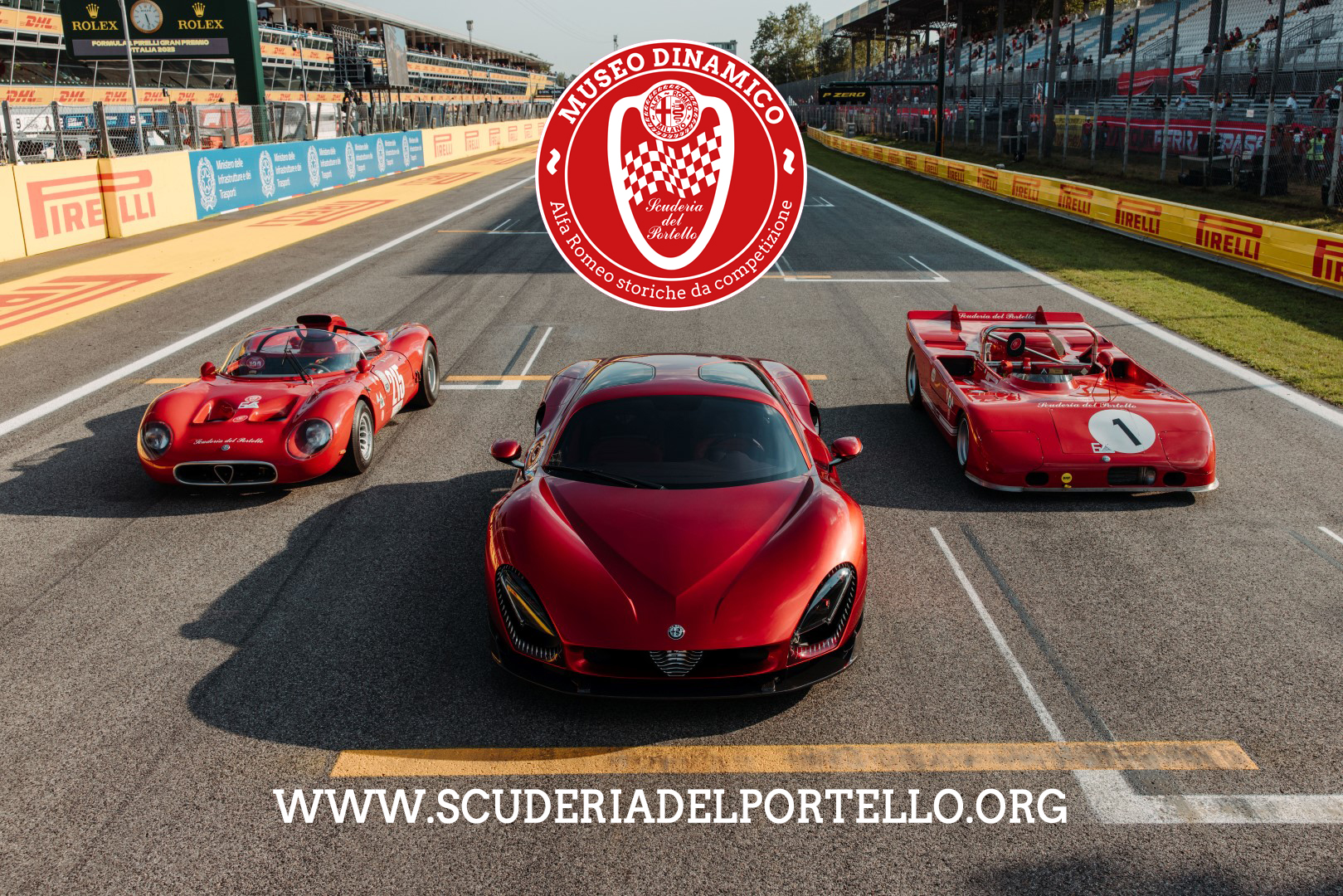
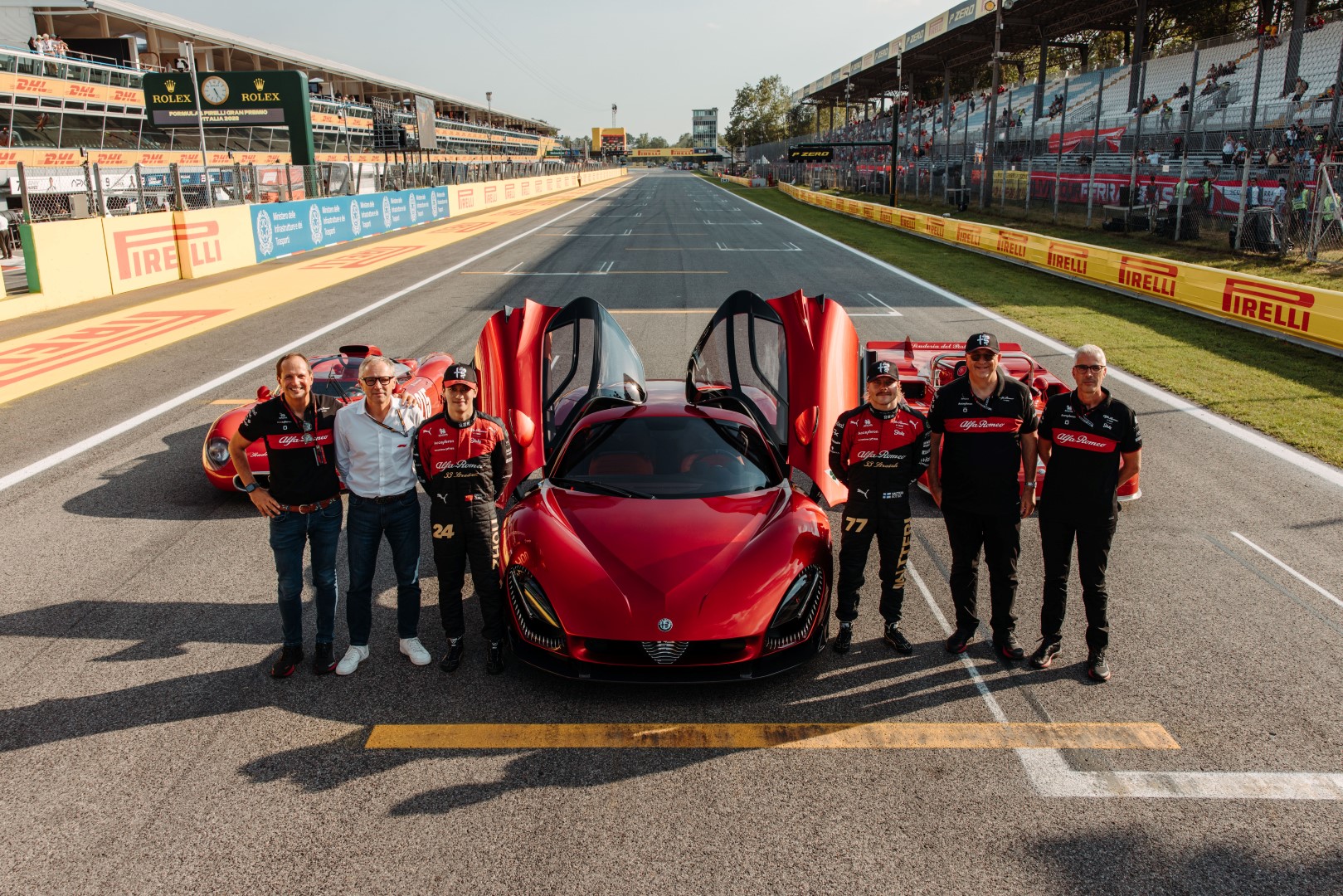

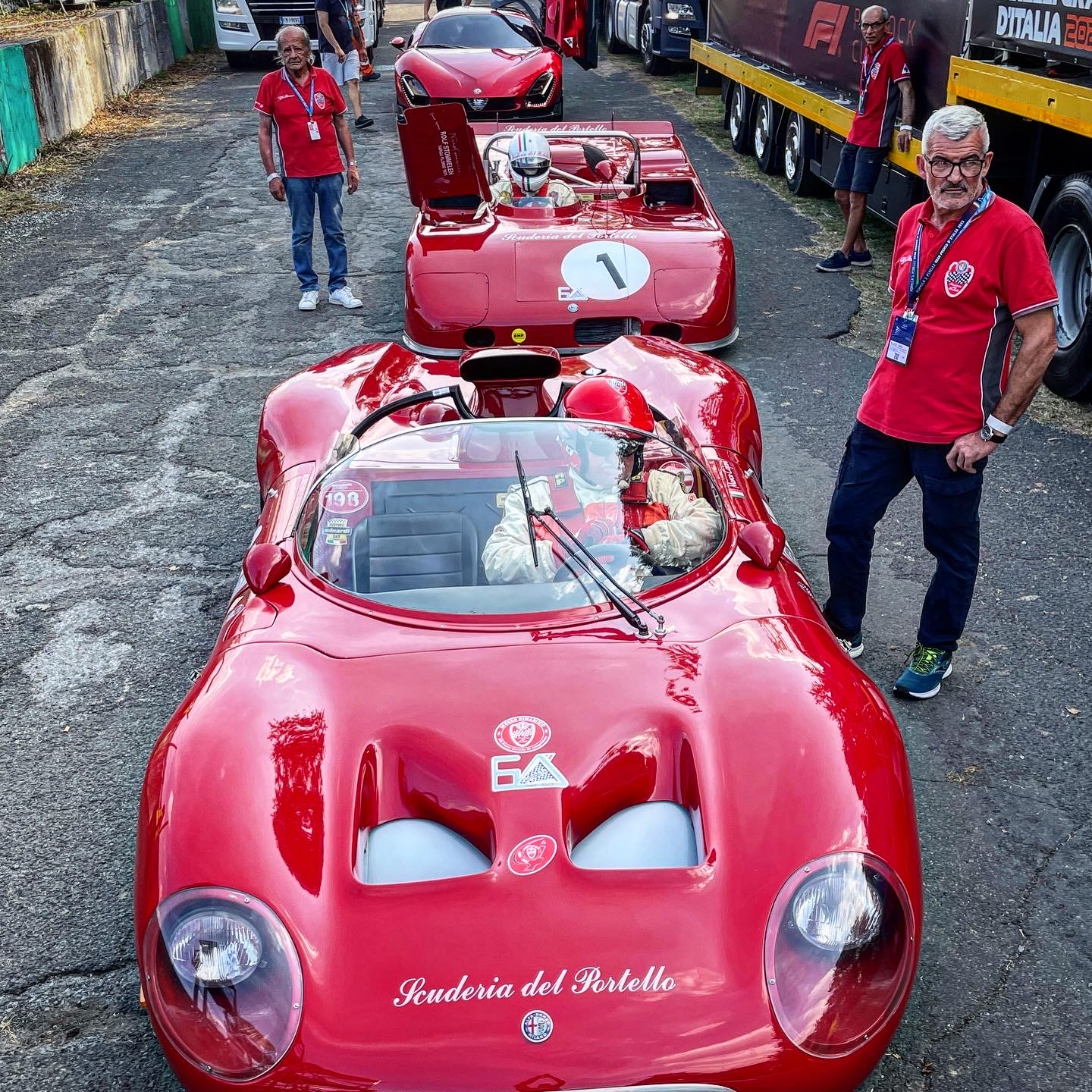
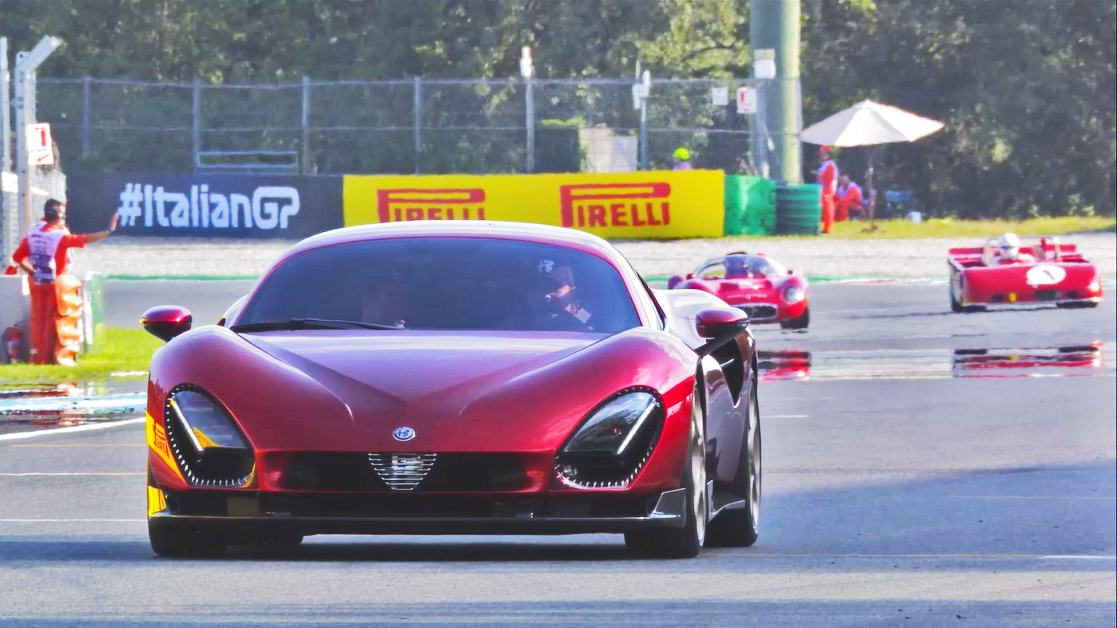
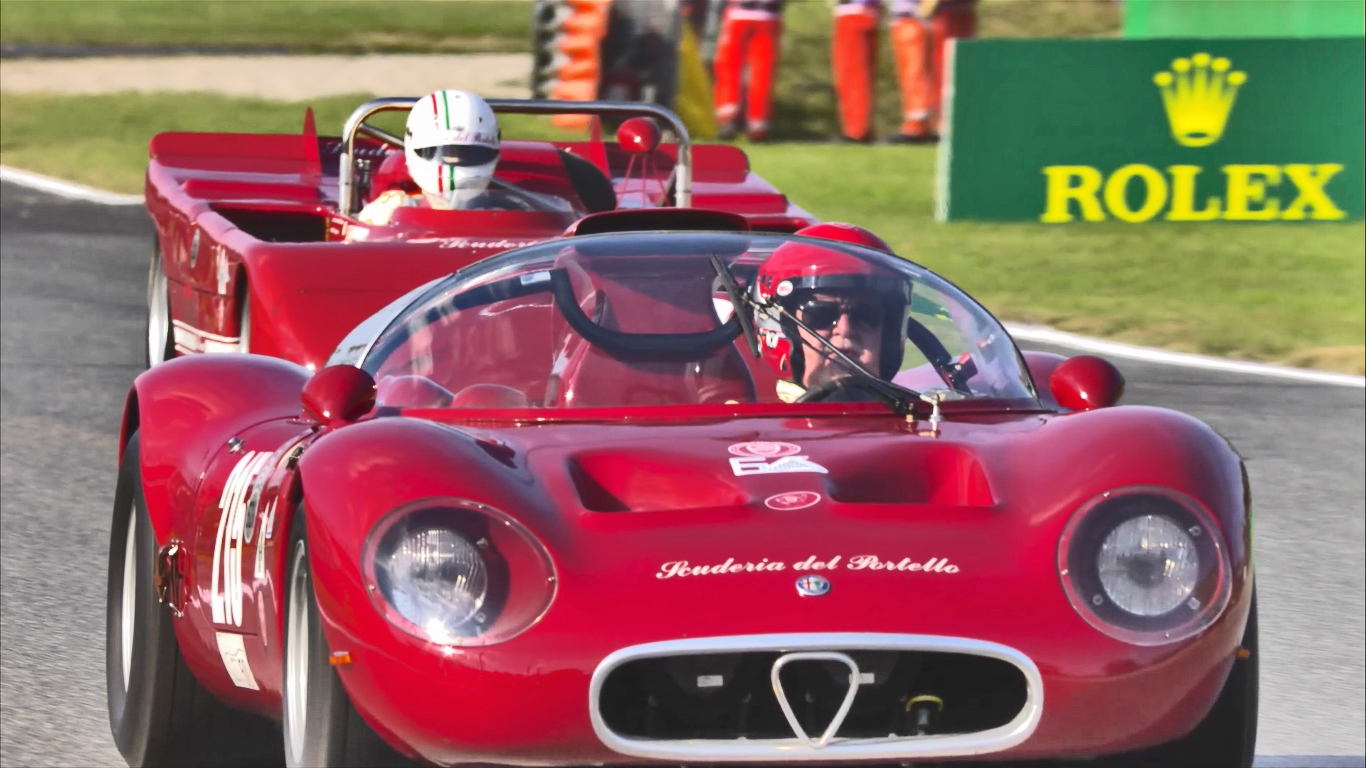
ALFA ROMEO TYPE 33/2 001 ‘PERISCOPICA’ or ‘FLÈRON’ OF 1967:
THE ORIGINS OF THE MYTH
The 33 Stradale of 1967 derives directly from the Tipo 33/2 ‘Periscopica’.
The 33 project marked Alfa Romeo‘s return to competition, led by the then brand president Giuseppe Eugenio Luraghi and engineer Carlo Chiti of Autodelta, the newly formed racing department.
For the debut, the Fléron hill-climb near Liège was chosen; driving the car was Autodelta’s chief test driver, Teodoro Zeccoli. It is 12 March 1967: the 33 enters the world of competition and wins immediately. It was the first in a long series of successes on the most prestigious circuits that would take it to the roof of the world, with victories in the ’75 and ’77 Brand Championships.
It is considered the ‘mother of the 33 Stradale’.
On the wave of sporting enthusiasm, Alfa Romeo decided to produce the 33 in a very small series for private individuals, an ‘fuoriserie’ that combined the performance of the Tipo 33 racing car with the comfort and driveability suitable for everyday use. The design was entrusted to Franco Scaglione.
The 33/2 001 ‘Periscopica’ that won at Fléron went on to take part in other competitions such as the Targa Florio, the 12 Hours of Sebring, the Palermo-Monte Pellegrino, Mugello, Vallelunga and the 1000 km of Nürburgring.
It was purchased partially disassembled from Alfa Romeo at the Autodelta headquarters in Settimo Milanese in 1986 and became part of the Scuderia del Portello’s historic Alfa Romeo Dynamic Museum. Certified by Carlo Chiti, with a document deposited at the Documentation Centre of the Alfa Romeo Historical Archives, is one of three examples currently in existence.
The 2-litre 8-cylinder engine, with a power output of 270 horsepower, was prepared by Carlo Facetti, Autodelta driver and test driver at the time. Its innovative tubular frame in light H-alloy with magnesium castings was made by Campagnolo in Vicenza.
Always considered a masterpiece of engineering weighing around 580 kg, the Scuderia del Portello brought it back to the track in 2000; since then it has been a guest for dynamic shows at Europe’s most prestigious events such as the 24 Hours of Le Mans.
Lord March (currently Duke of Richmond), the patron of Goodwood, has wanted to host this car in several editions of the ‘Goodwood Festival of Speed’ and the ‘Goodwood Revival’.
During the revival of the Targa Florio in 2001, the drivers who drove it in the 1960s autographed the car with great enthusiasm, confirming its authenticity (Carlo Facetti, Arturo Merzario, Nino Vaccarella and Nanni Galli), and in 2013, on the occasion of the ’50th Autodelta’ at Monza, Teodoro Zeccoli himself climbed aboard it again with great emotion, as he did at Imola in 2017 on the occasion of the car’s 50th anniversary.
Even rock star Brian Johnson of AC/DC in 2015 chose to dedicate a feature to it on his popular Discovery Channel television programme.
Perfectly running, in recent years it has taken to the track at Zandvoort and Assen for the ‘Spettacolo Sportivo Alfa Romeo’, at Imola for the ‘Historic Minardi Day’, at Goodwood for the ‘Festival of Speed’, at Monza for the ‘Coppa Intereuropa’ and the major international Alfa Romeo Club rallies organised by the Scuderia del Portello; finally, again in the ‘Temple of Speed’, to accompany the presentation of the new 33 Stradale.
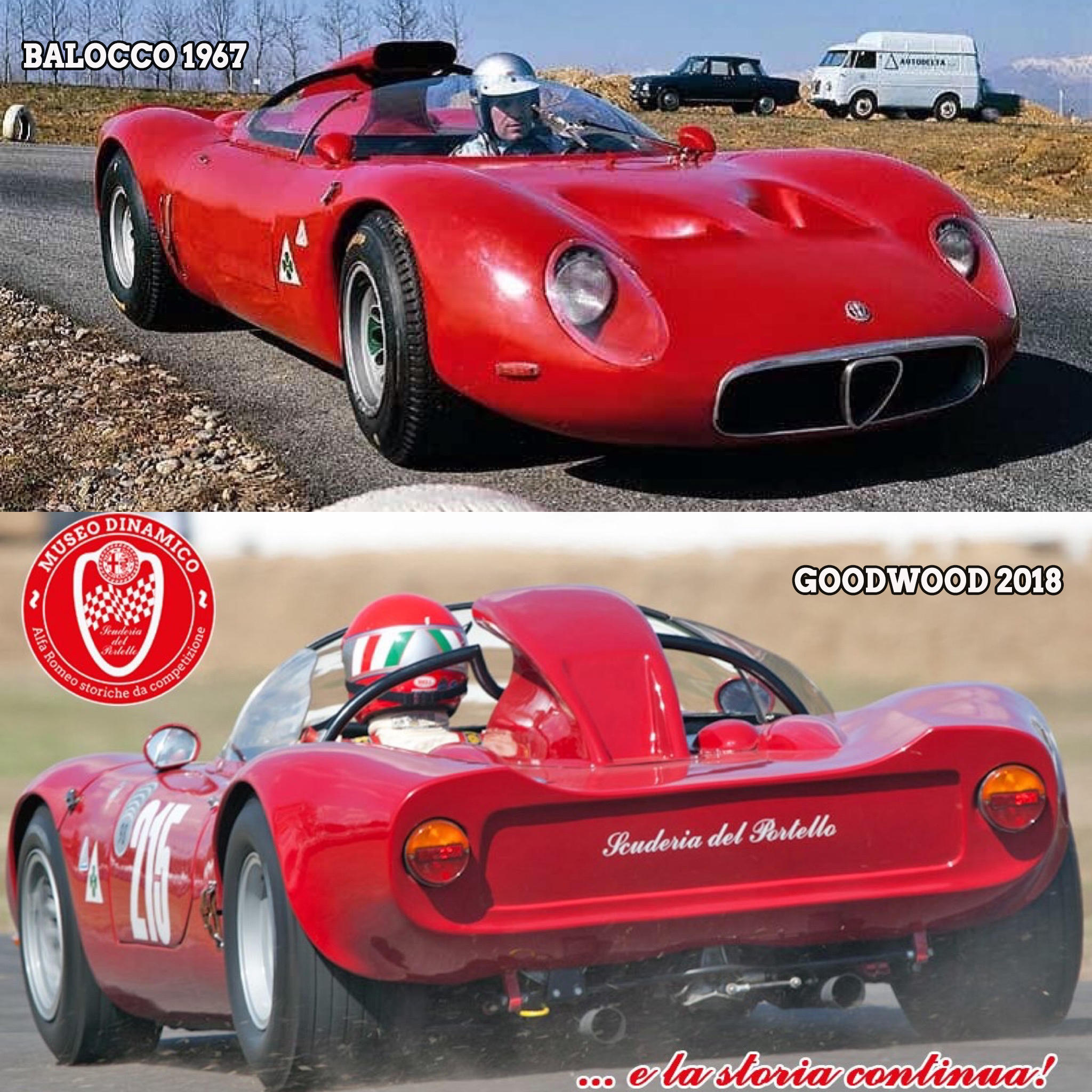
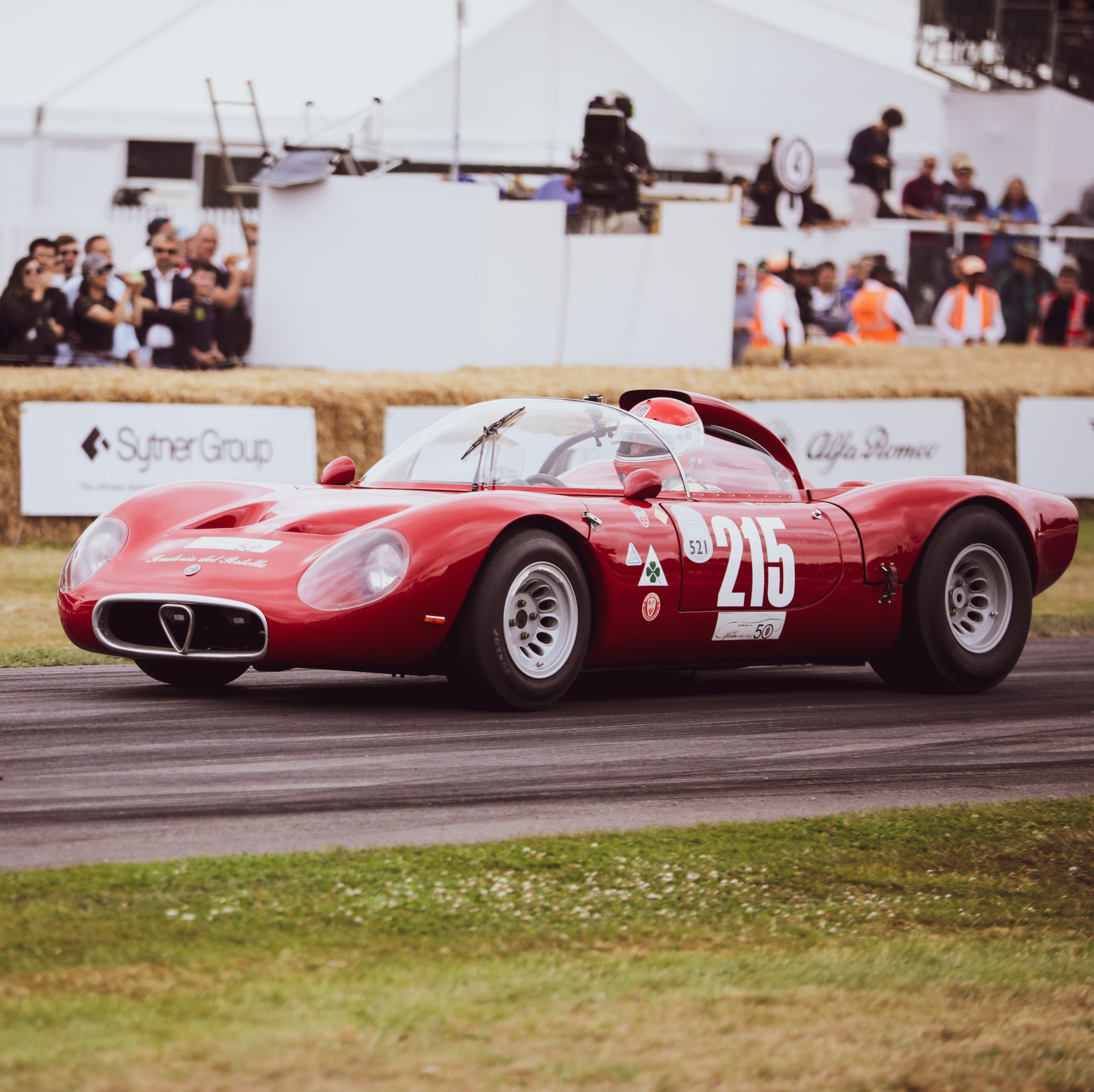
GOODWOOD F.O.S. 2022
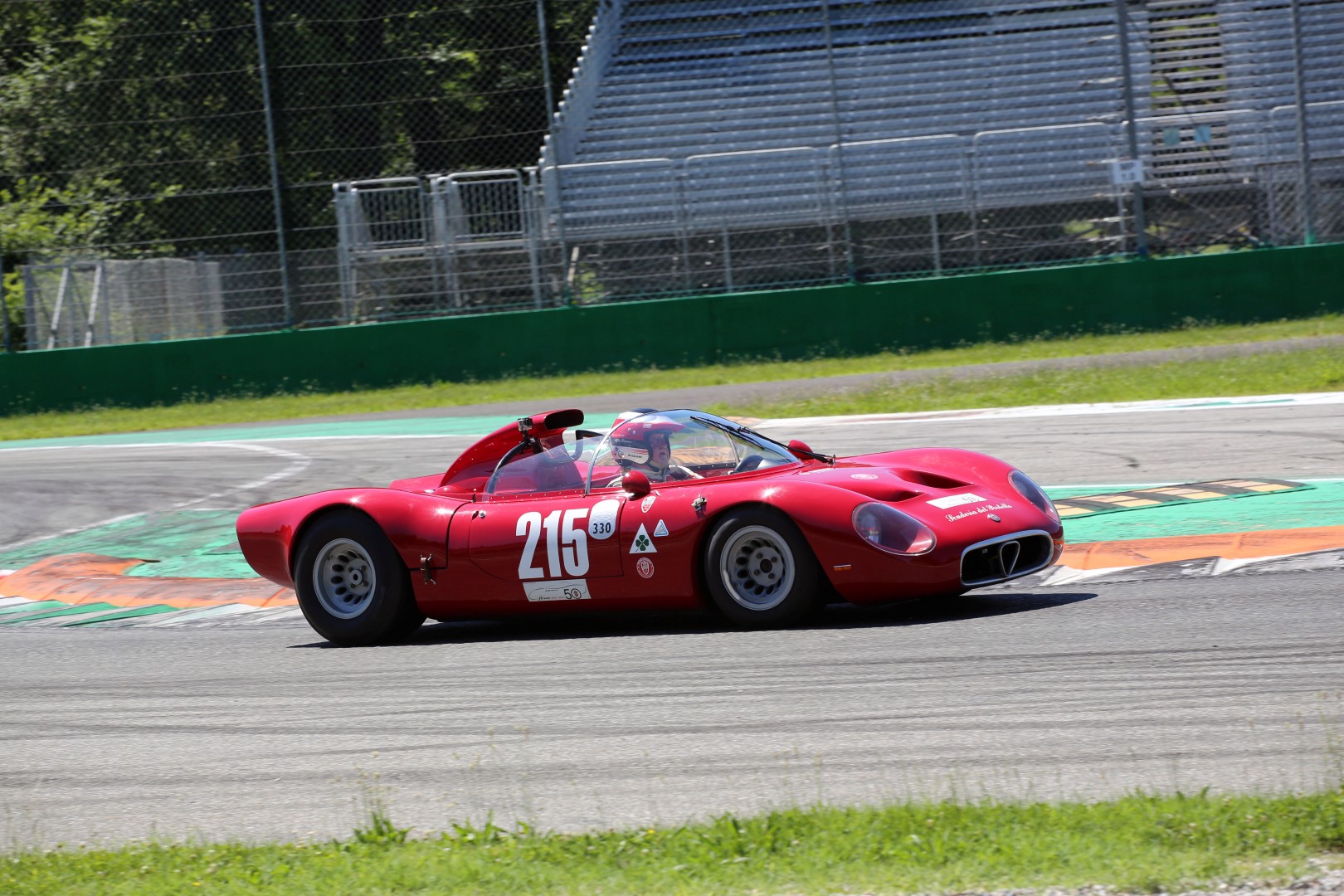
MONZA 2022
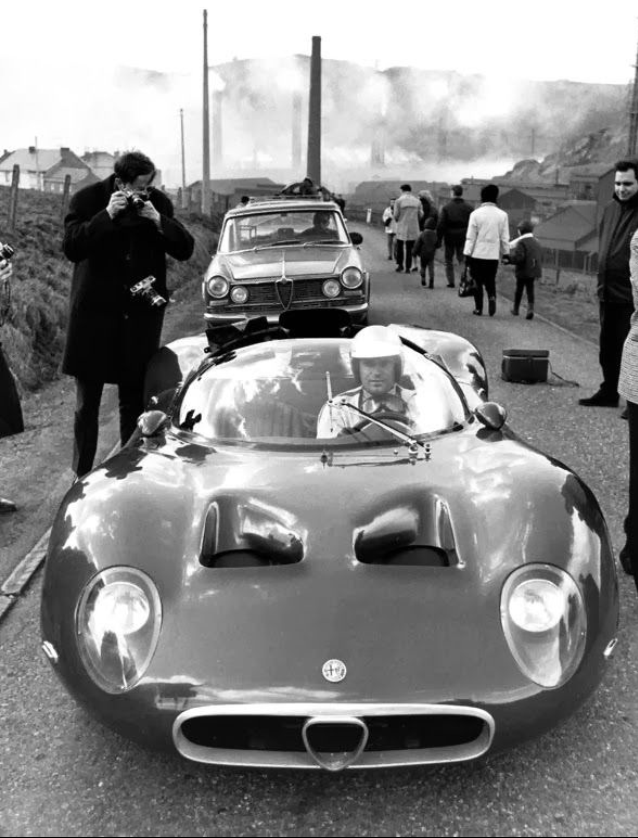
Teodoro Zeccoli, Fléron 1967
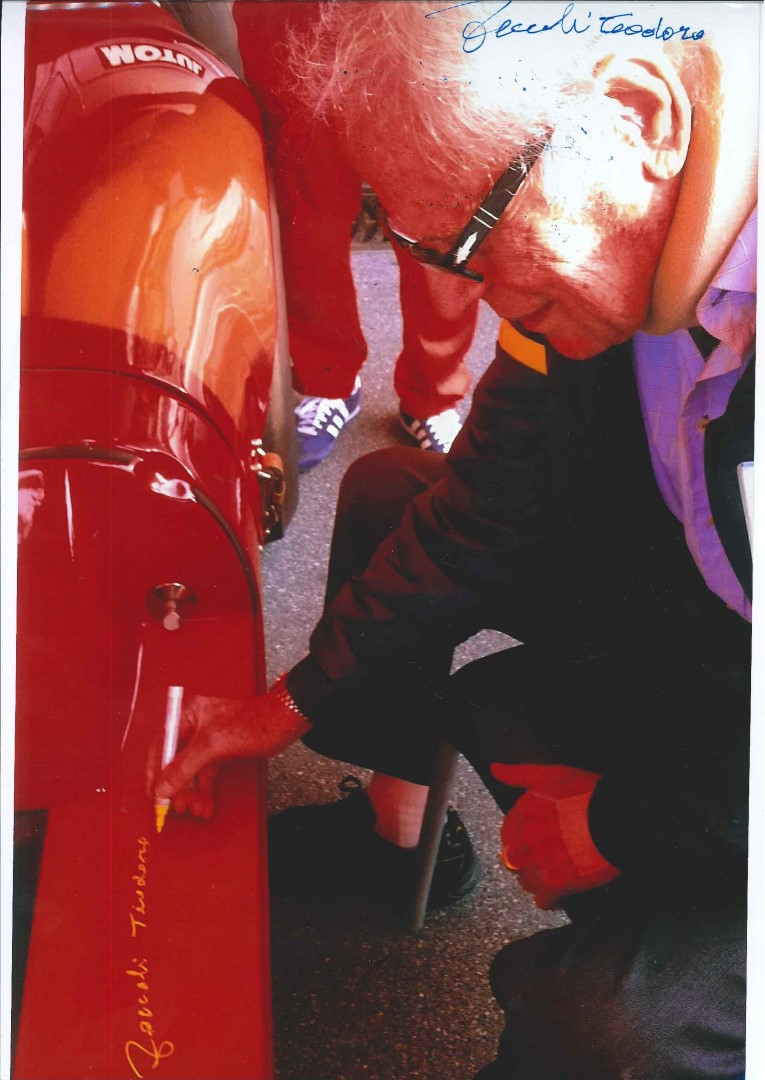
Teodoro Zeccoli, Monza 50° Autodelta 2013
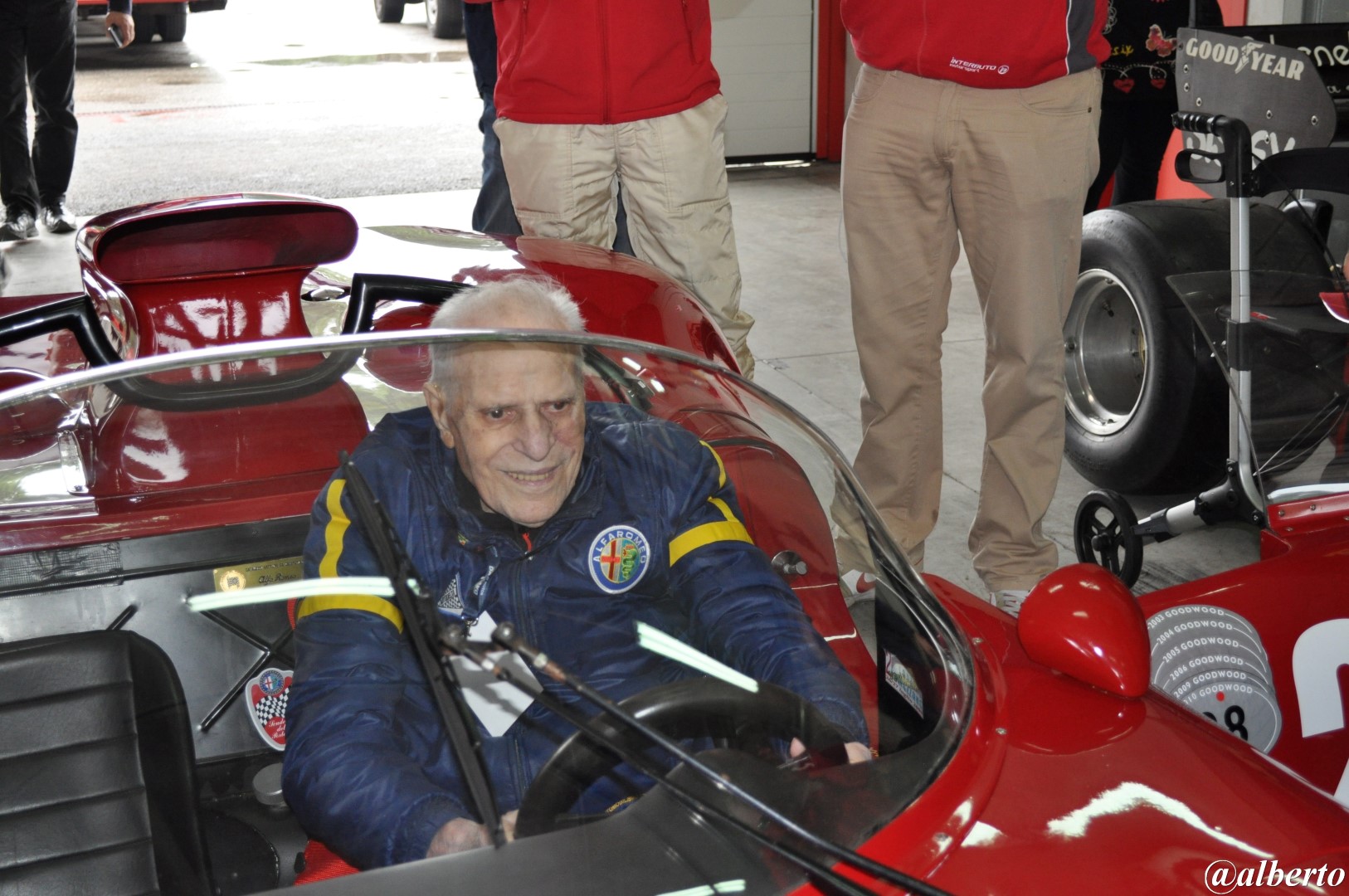
Teodoro Zeccoli, Imola 2017
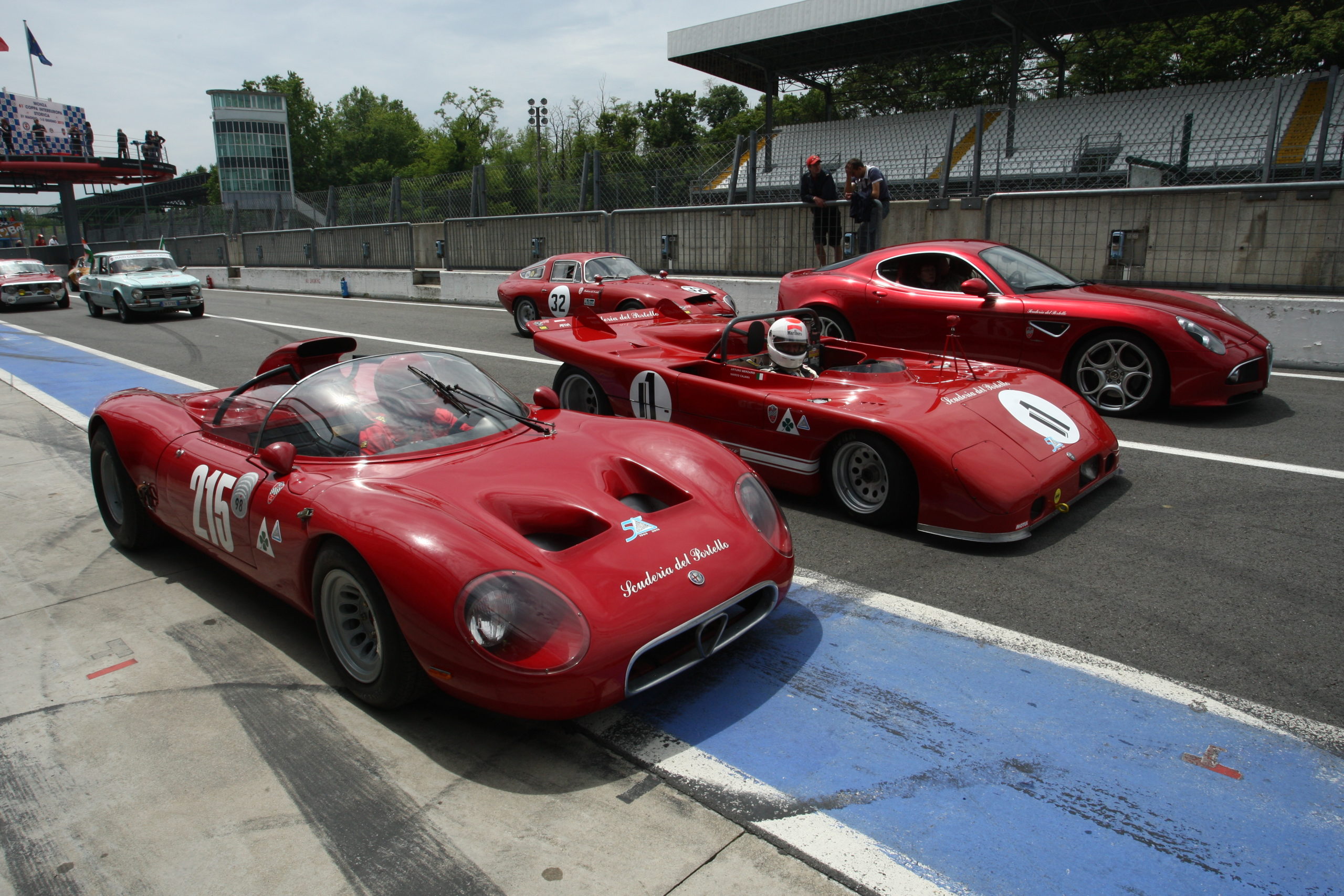
50° Autodelta, Monza 2013
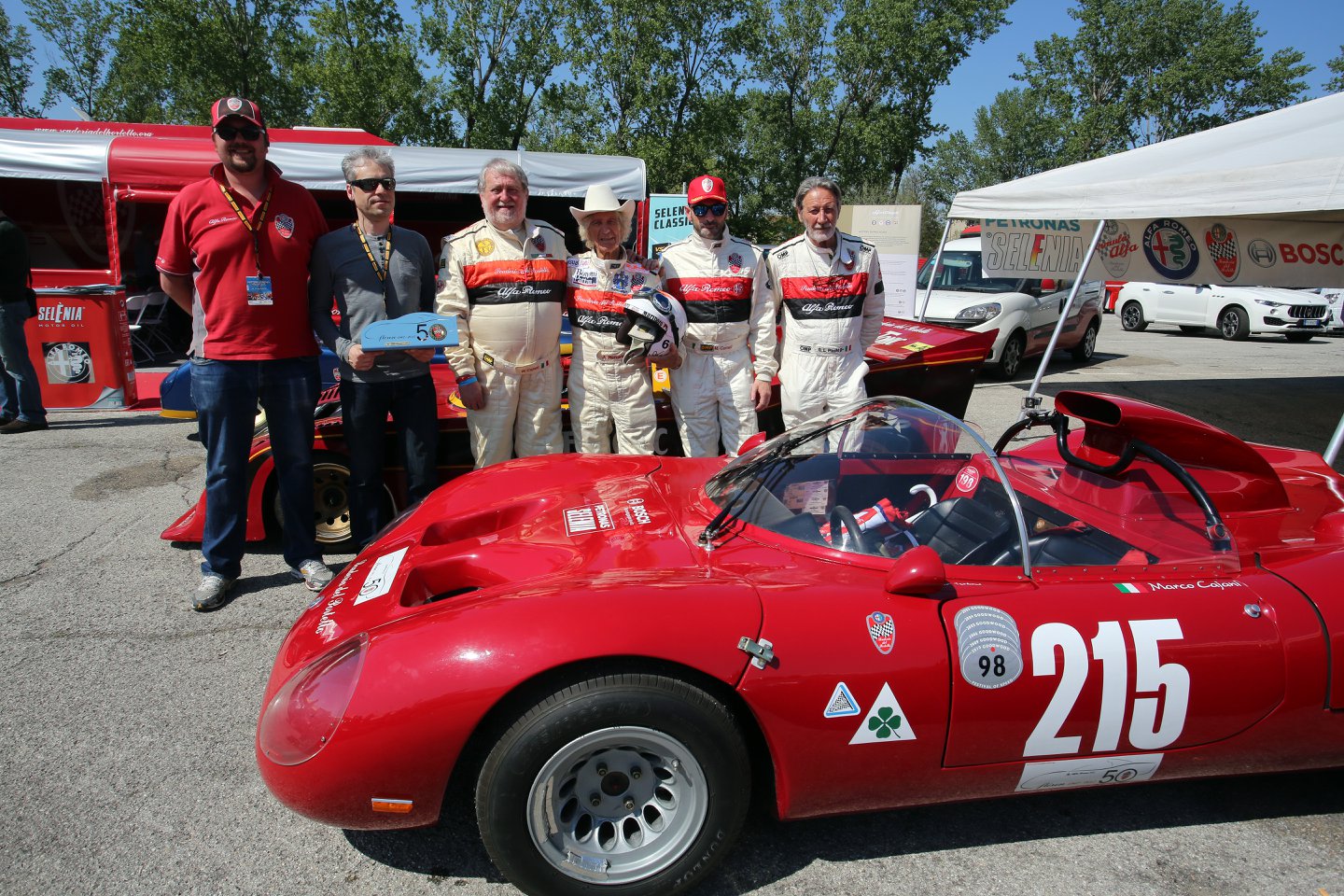
Memorial Teodoro Zeccoli, Imola 2018. Andrea Zeccoli (figlio) con Arturo Merzario, Gian Luigi Picchi e i piloti della Scuderia del Portello
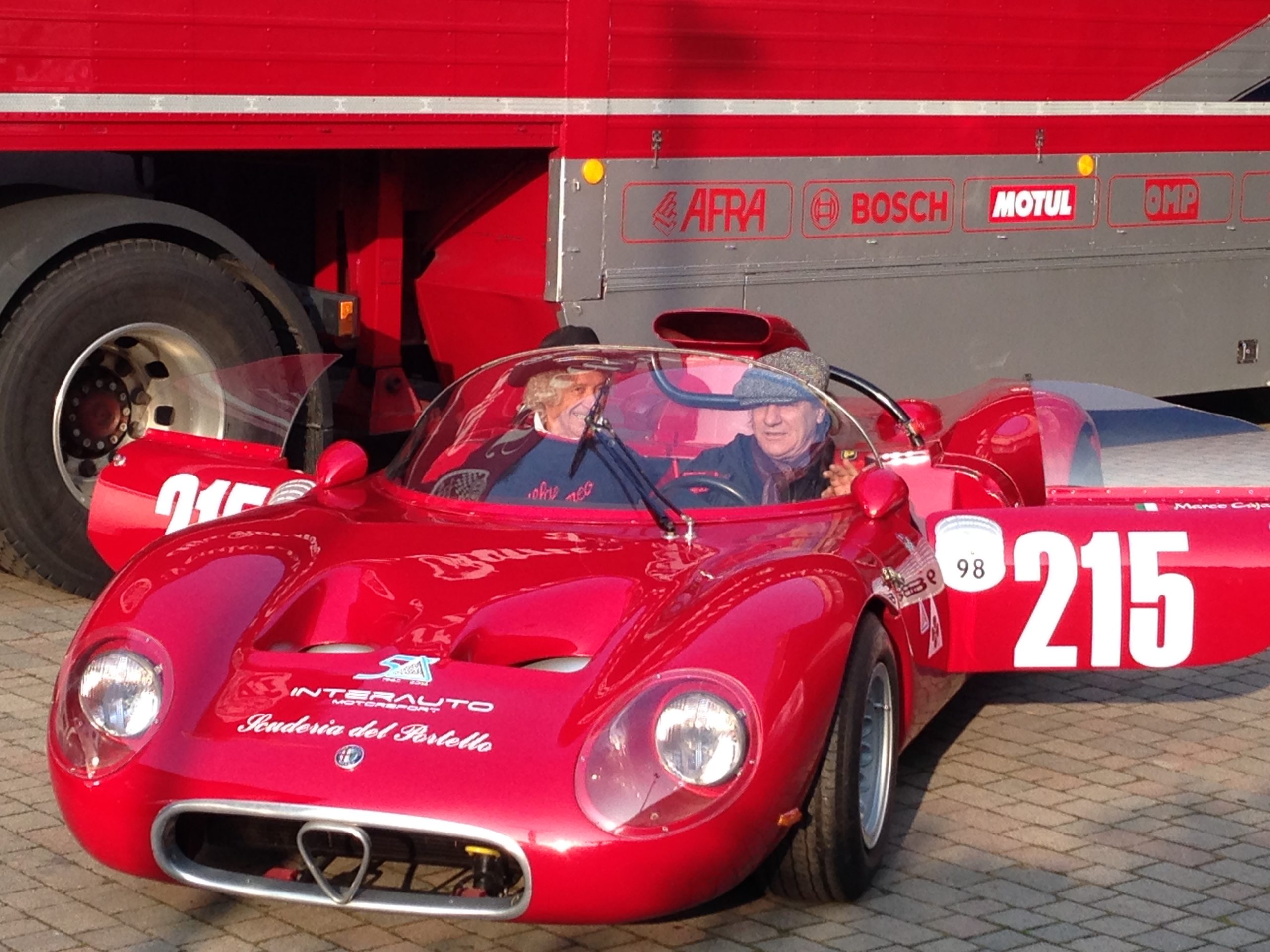
Brian Johnson e Arturo Merzario, Scuderia del Portello 2015
THE 1971 ALFA ROMEO TYPE 33TT3 001:
FROM TARGA FLORIO TO WORLD TRIUMPHS
The 1971 Alfa Romeo Tipo 33TT3 was Autodelta’s first tubular prototype created after the previous box-frame version.
The car was created as a short-wheelbase experiment and was presented at the 1971 Targa Florio to counter the small Porsche 908/03 that had dominated the previous year’s edition.
It was used by Rolf Stommelen, Nino Vaccarella, Carlo Facetti and Teodoro Zeccoli during testing in the Sicilian race, then in the race they raced the version they used regularly that season, with the boxed chassis, winning the Targa with Vaccarella/Hezemans.
This prototype, the first built in this version with chassis 001, after tests at Balocco and Vallelunga also with Gian Luigi Picchi, was then raced in 1971 by Henri Pescarolo and Rolf Stommelen at Montlhery and by Teodoro Zeccoli and Carlo Facetti at the 1000 km of the Nürburgring.
From this car came the prototype that raced in the 1972 to 1975 seasons, with a longer wheelbase, radiators set in a lower position and a rear end with different aerodynamics. It also had a more collected driver’s seat and four headlights at the front.
After 1971, it remained at Autodelta where it was purchased in 1986 following the closure of the historic Settimo Milanese site, becoming part of the Scuderia del Portello’s Alfa Romeo Historic Racing Dynamics Museum (together with the Tipo 33/2 ‘Fléron’).
Also certified by Carlo Chiti on 26 November 1986 and provided with all its spare parts to rebuild it, the Scuderia del Portello restored it and prepared it once again to bring it back to the track.
Among the different types of gearboxes provided depending on the competition, it mounts the Alfa Romeo gearbox originally used during the five-speed tests. The differential is at the rear of the gearbox to concentrate the masses within the car’s wheelbase and not have any additional overhanging weight.
The 2,998 displacement engine with 400 horsepower consists of eight 90° V-cylinders.
On the car are all the autographs of the drivers who have driven and recognised it: Teodoro Zeccoli, Rolf Stommelen, Carlo Facetti, Arturo Merzario, Nino Vaccarella and Nanni Galli.
The patron of Goodwood wanted to host this car in several editions of the ‘Goodwood Festival of Speed’ and the ‘Goodwood Revival’.
He raced at Portimao and Dijon-Prenois in the ‘classic’ races organised by Peter Auto and took part several times in the ‘Coppa Intereuropa’ at Monza driven by Arturo Merzario, at Le Mans Classic, at the ‘Historic Minardi Day’ at Imola and at the ‘Alfa Romeo Sports Show’ at Zandvoort – to name but a few of his most important appearances.
In 2015, it was exhibited at the EXPO in Milan for the opening of the Regione Lombardia Pavilion.
Together with the Tipo 33/2 ‘Fléron’ it was the undisputed protagonist of the celebrations for the ’60 years of Autodelta and the Centenary of the Quadrifoglio’, in particular at the Autodromo Nazionale Monza for the great event organised by the Scuderia del Portello in collaboration with the Registro Italiano Alfa Romeo during the ‘ACI Storico Festival 2023’; and lastly, once again in the ‘Temple of Speed’, to accompany the presentation of the new 33 Stradale.
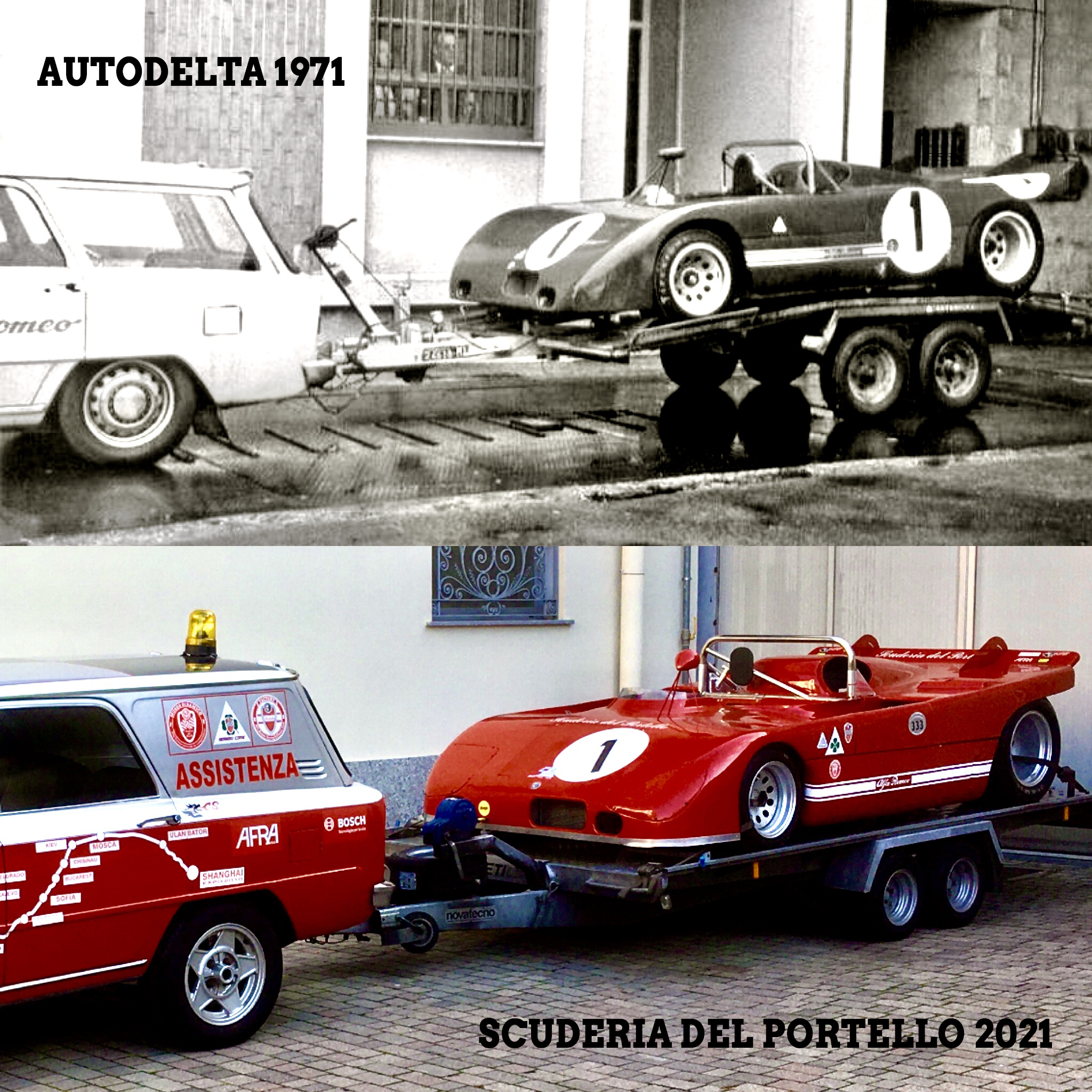
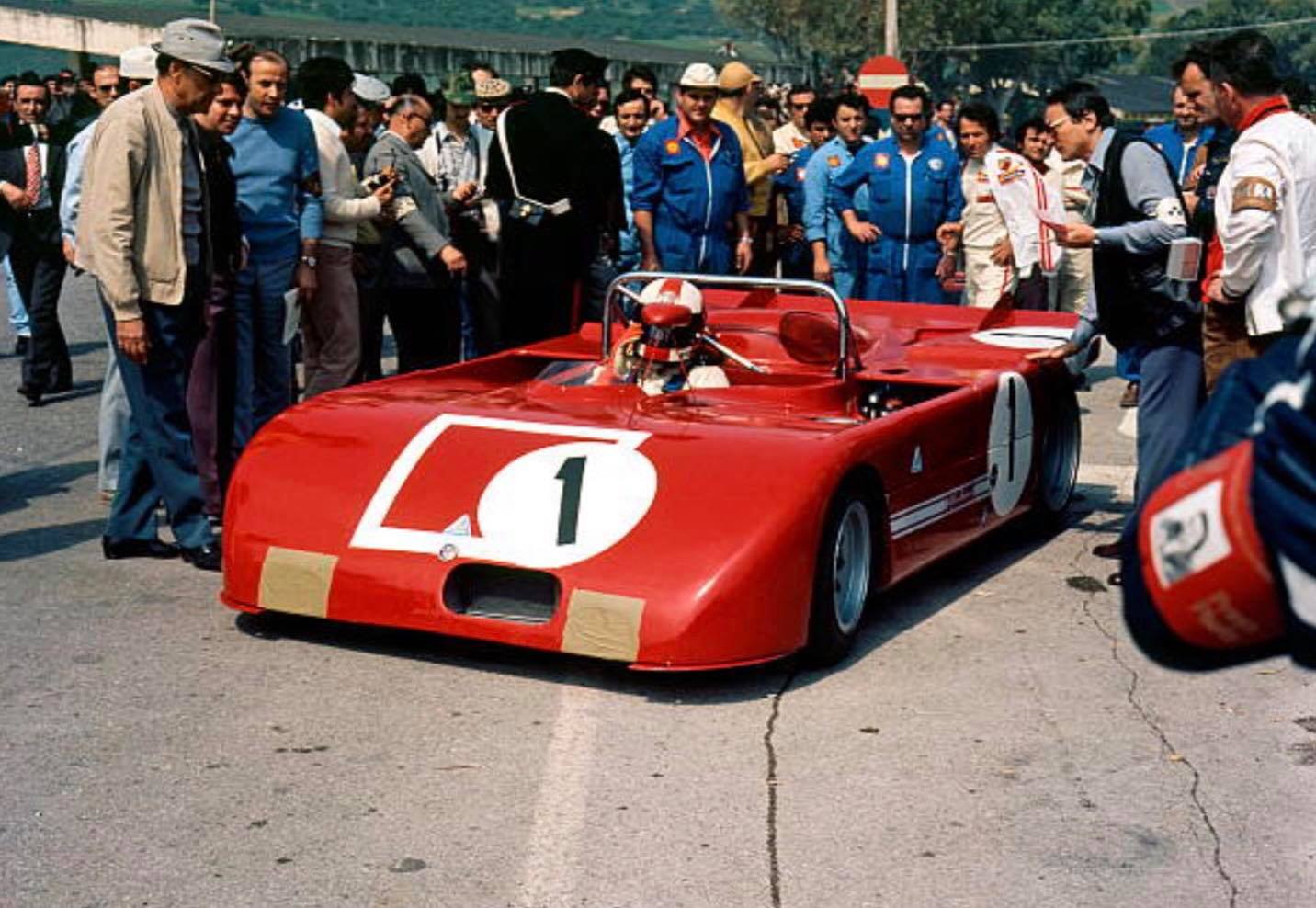
Rolf Stommelen, Targa Florio 1971
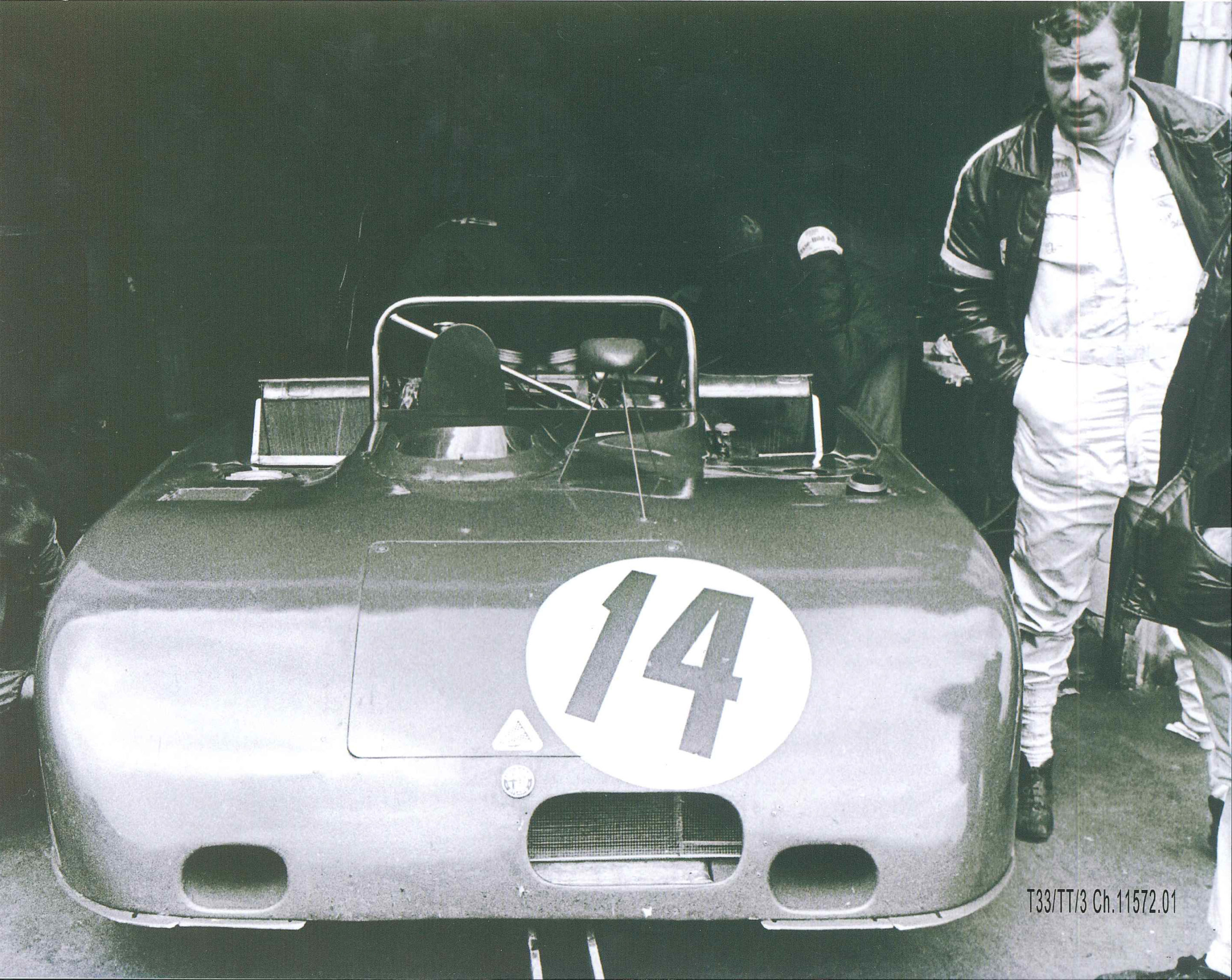
Teodoro Zeccoli, Nürburgring 1971
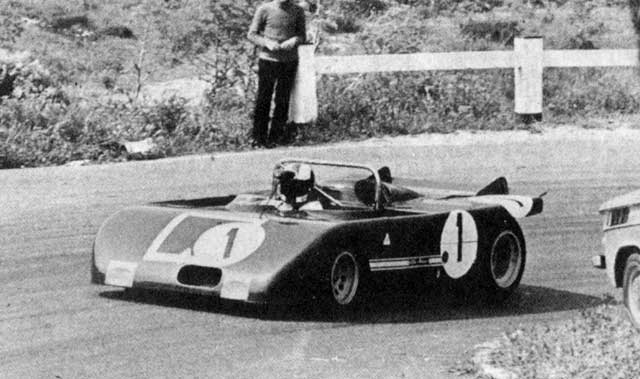
Rolf Stommelen, Targa Florio 1971
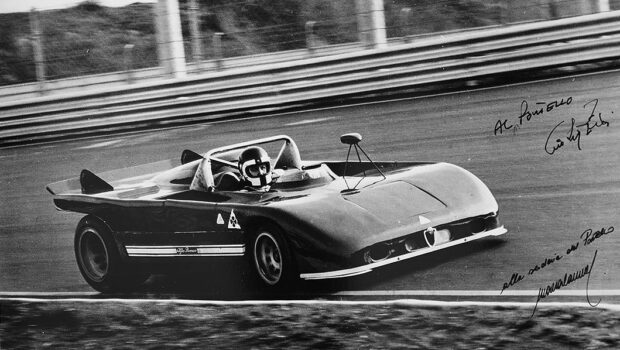
Gian Luigi Picchi, Vallelunga 1971
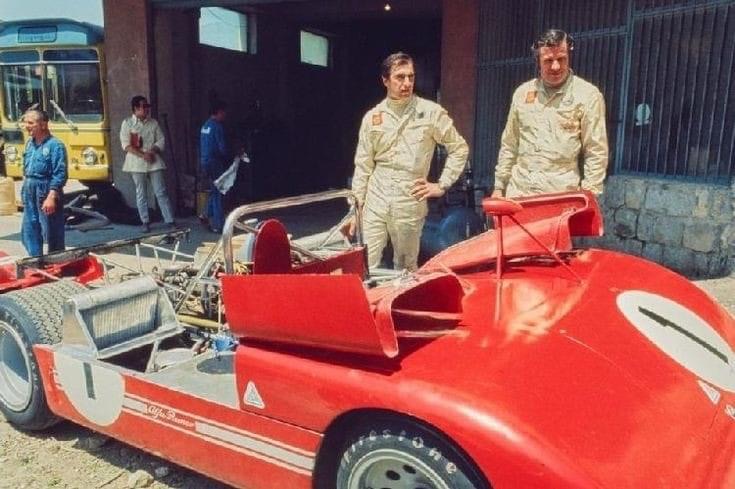
Carlo Facetti e Teodoro Zeccoli, Targa Florio 1971
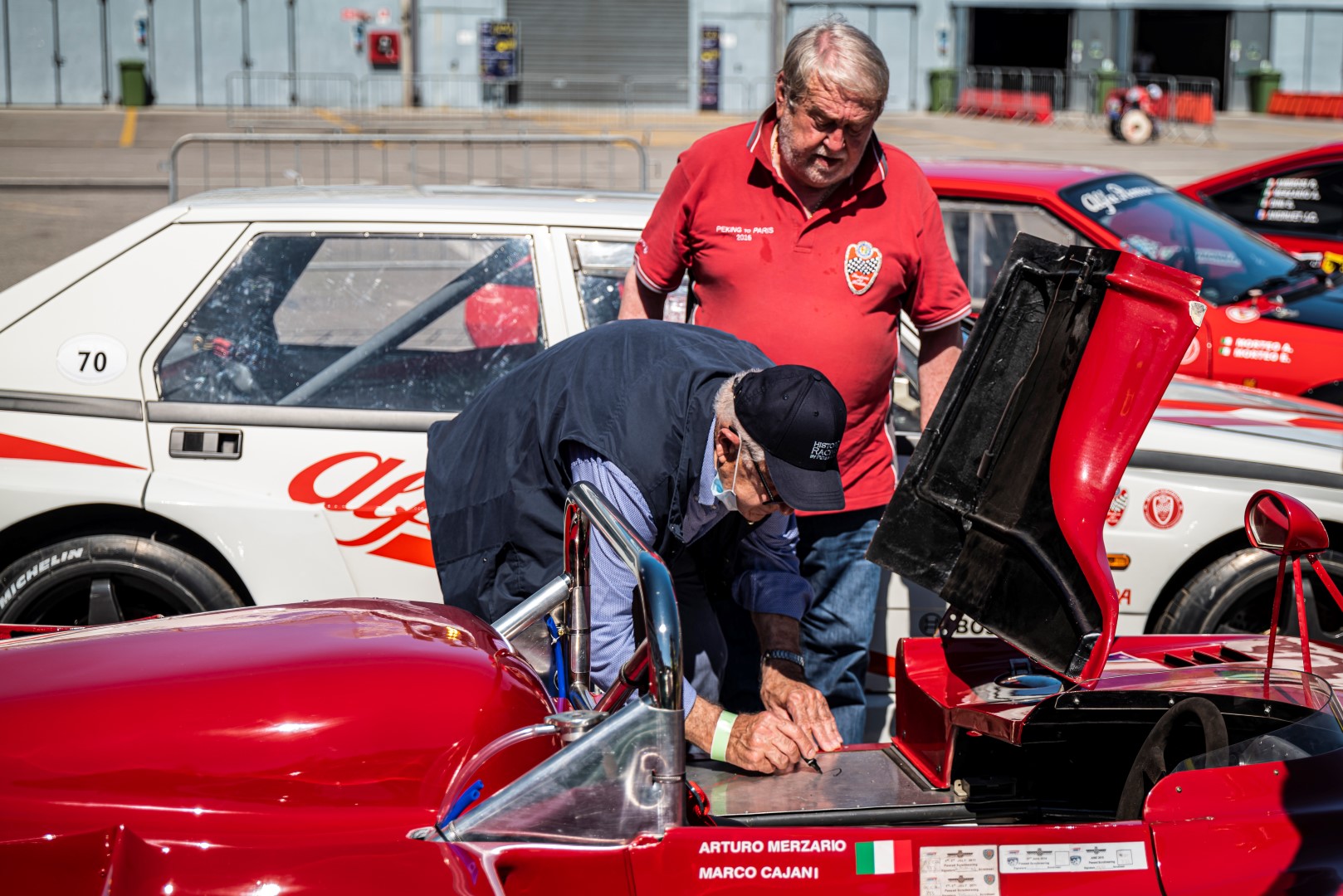
Carlo Facetti, Monza 2021
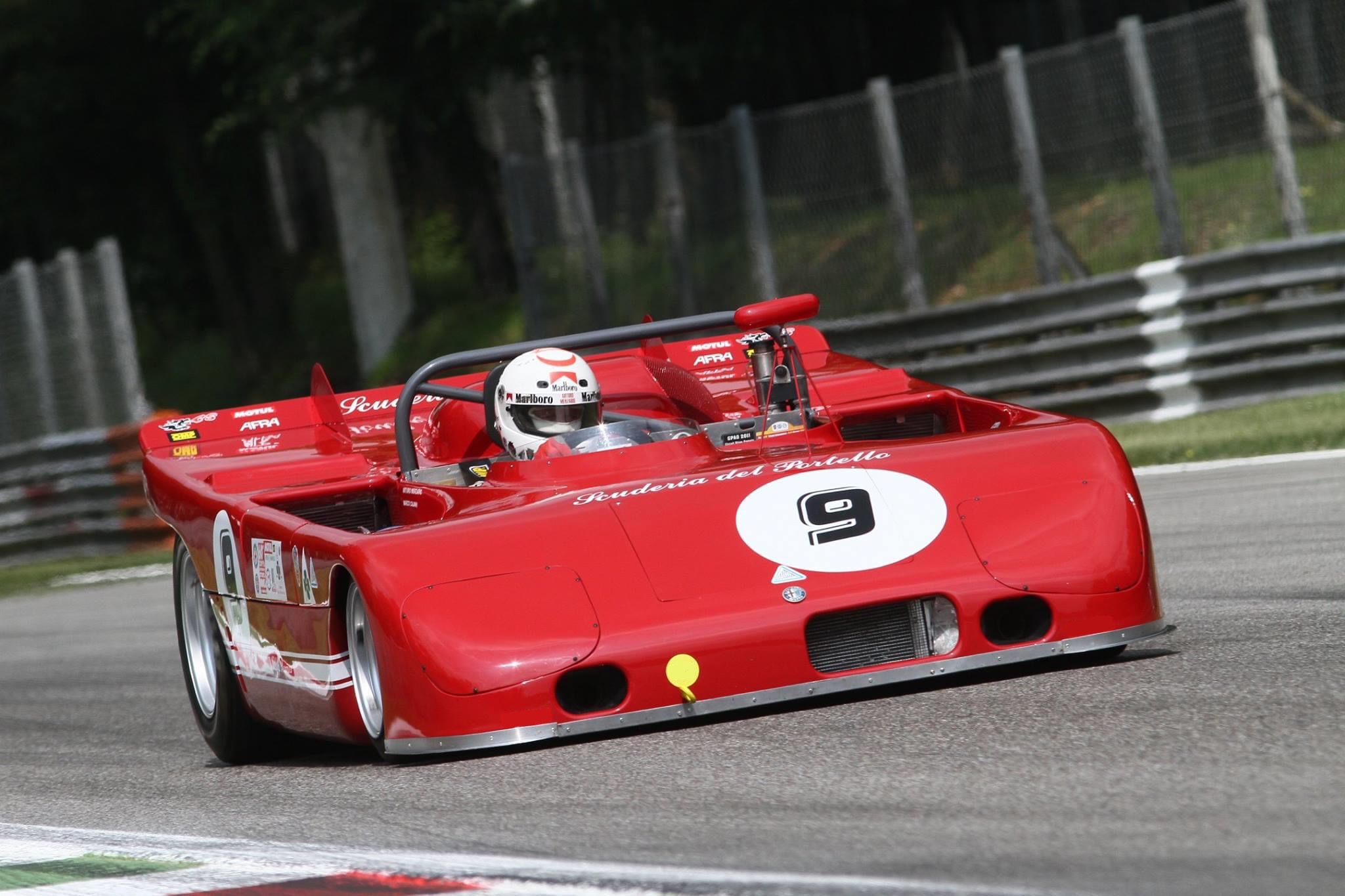
Arturo Merzario, Monza 2015
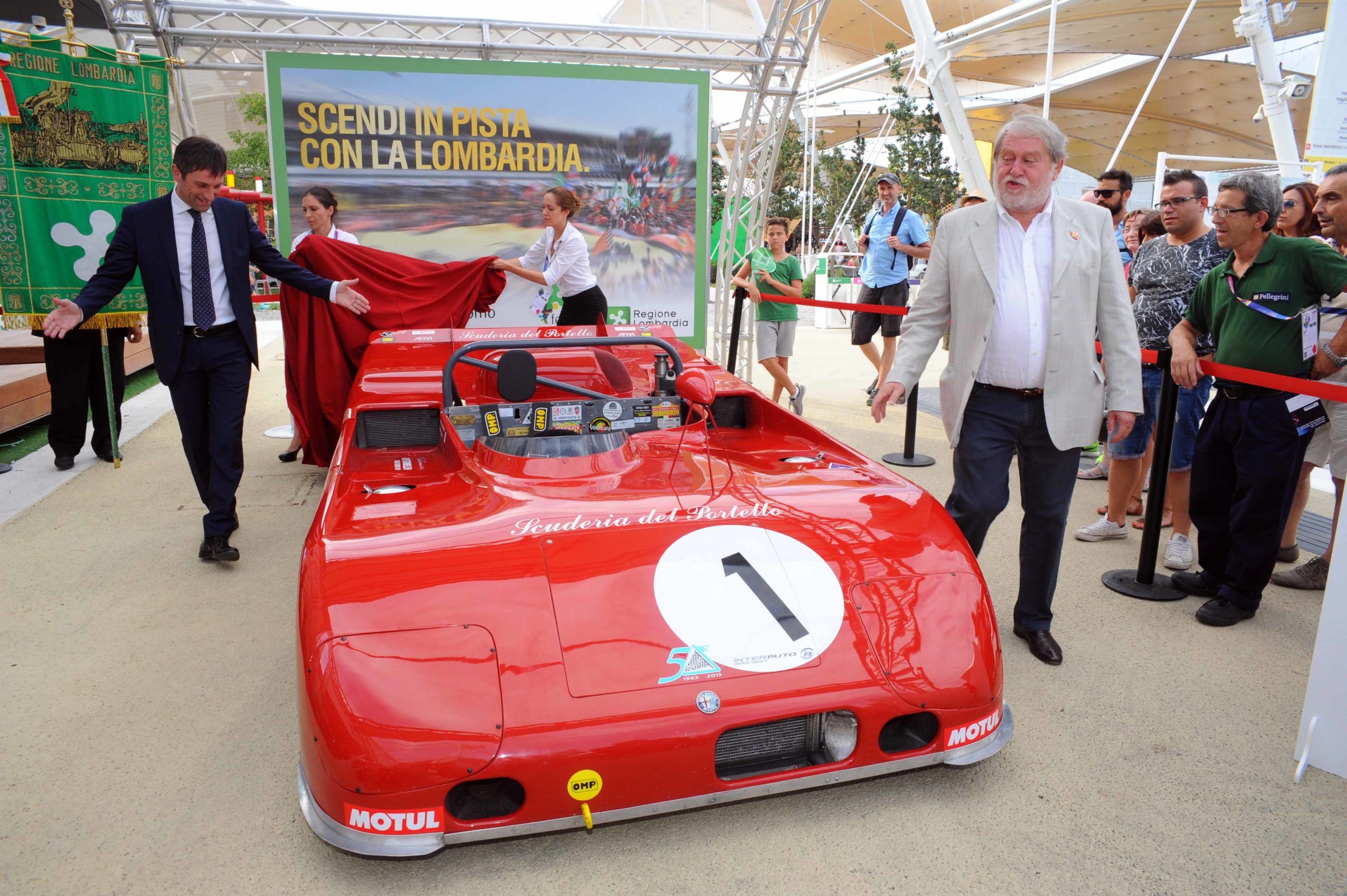
EXPO MILANO 2015
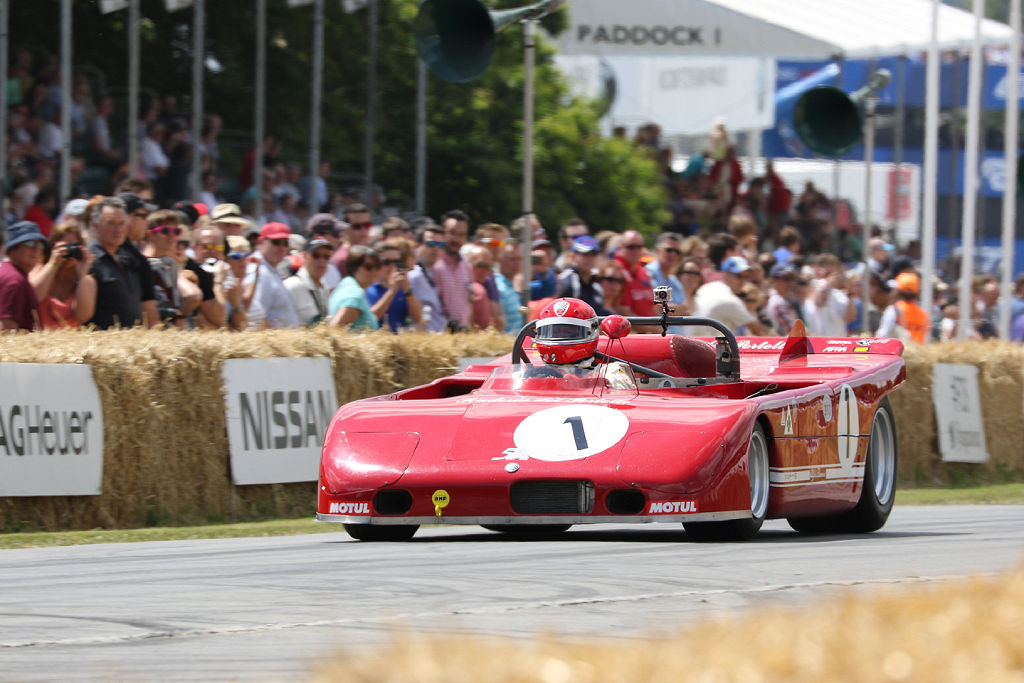
Goodwood 2015
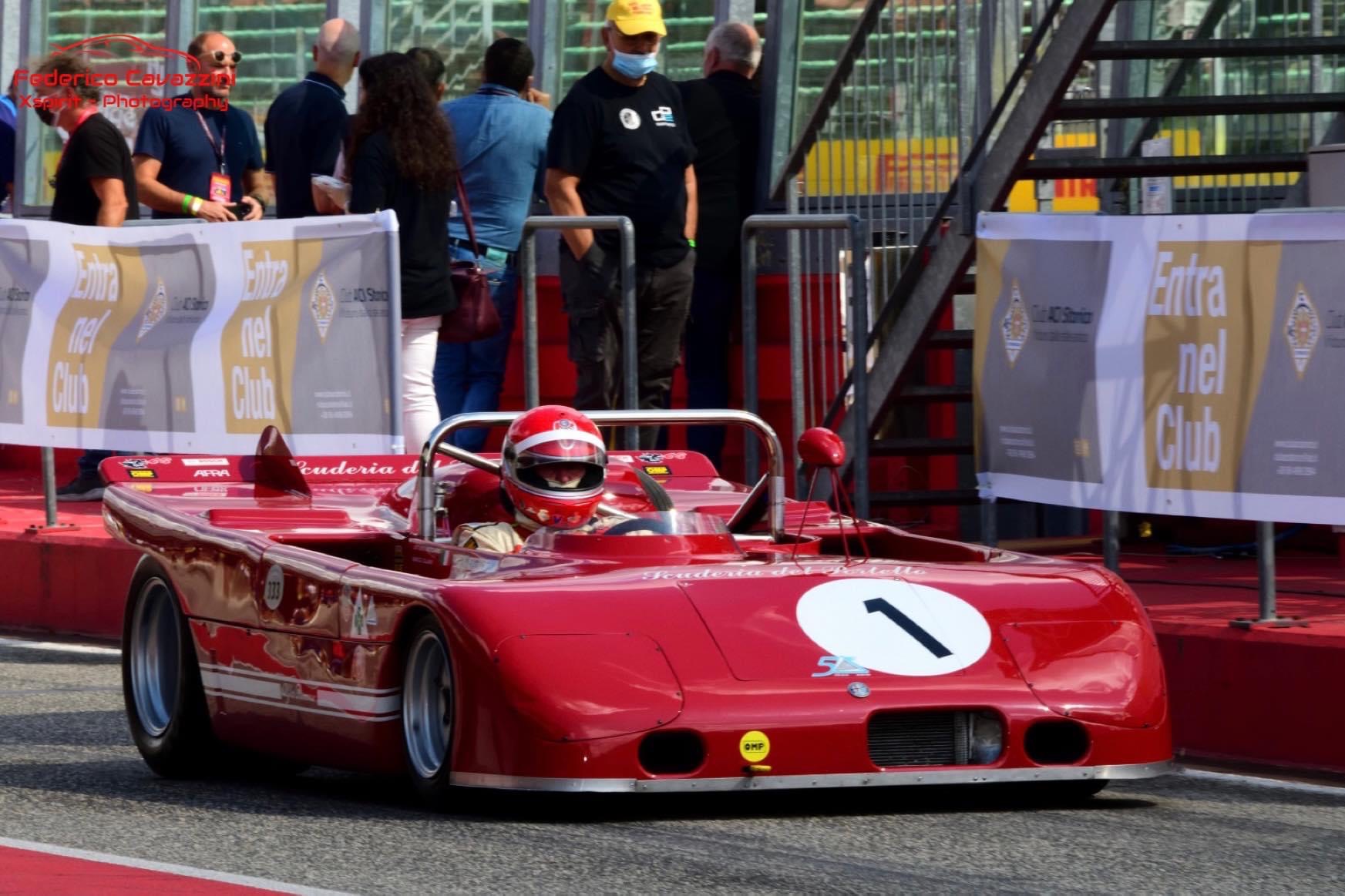
Historic Minardi Day 2022
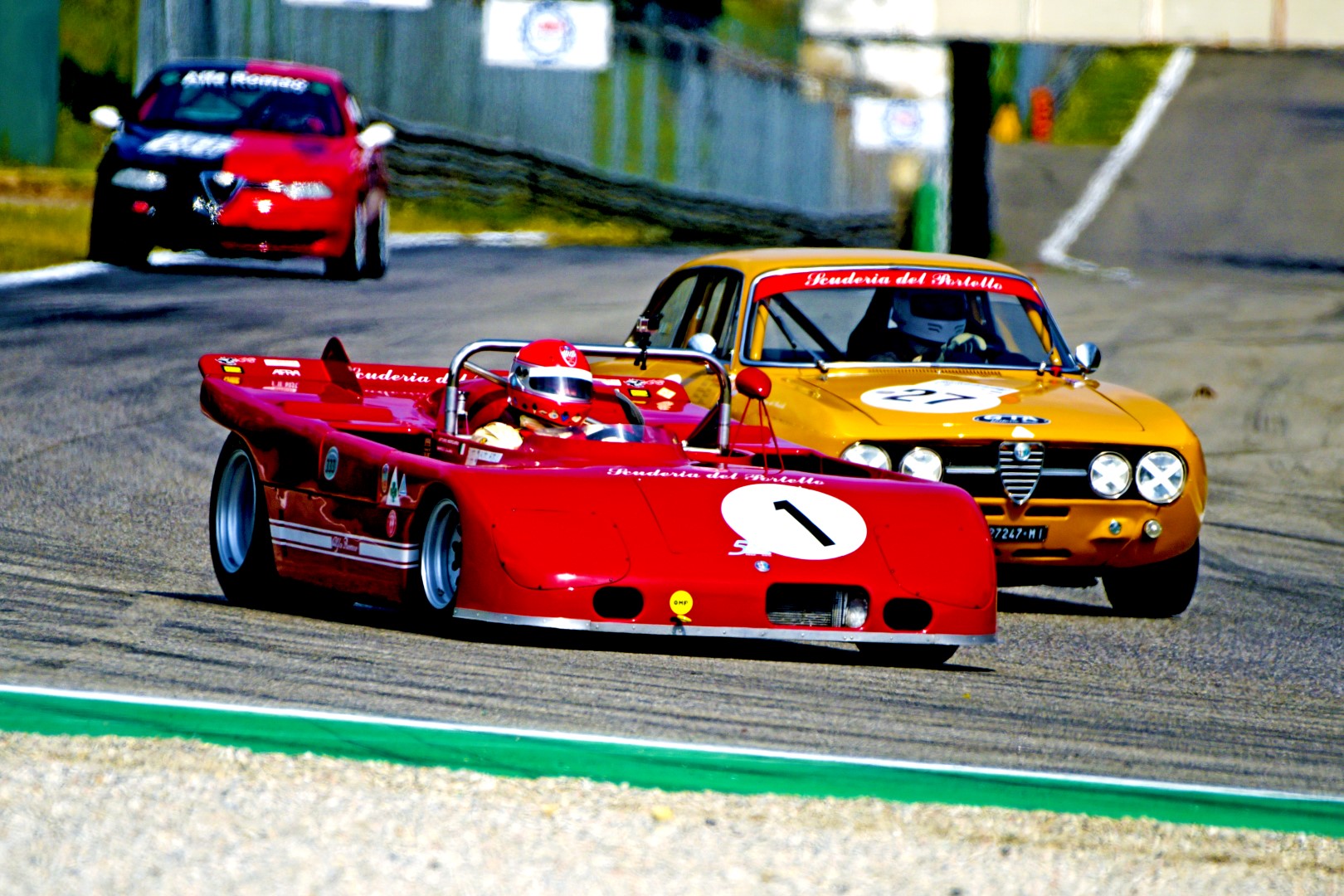
60° Autodelta – Centenario Quadrifoglio, Monza 2023
THE NEW ALFA ROMEO 33 STRADALE… AND THE STORY CONTINUES!
The new 33 Stradale was born in the newly-established Alfa Romeo ‘Bottega’ where designers, engineers and brand historians first listened to potential buyers and then built it together, exactly as it was done in Renaissance craft workshops or in the workshops of famous Italian coachbuilders in the 1960s.
The product of the Alfa Romeo Style Centre and developed at the Carrozzeria Touring Superleggera, the new 33 Stradale is inspired by the historic 1967 model, enriching its sculptural beauty with some design elements from Alfa Romeo’s new stylistic language.
The exterior is characterised by a perfect balance between proportions, volumes and surface treatment, representing the epitome of Alfa Romeo‘s ‘necessary beauty’. The front features a powerful, muscular volume, on which the iconic shield stands out, and light clusters with a complex shape on an elliptical base. The side line is dynamic and sleek, with ‘elongated’ opening doors and two large side air intakes. The body is projected forward, with surfaces modelled according to the typical criteria of Alfa Romeo formal expression. The ‘brutal’ rear is balanced by the sinuous front and the maximum height is not at windscreen height, as on any other sports car, but in the centre of the roof. In particular, the rear expresses the strength of the car with its truncated tail, a ‘V’ graphic and round taillights.
Alfa Romeo‘s new ‘fuoriserie’ can be equipped with a twin-turbo V6 engine with over 620hp or in BEV configuration with over 750hp. Performance is excellent in both versions. Top speed is 333 km/h while acceleration from 0 to 100 km/h takes less than 3 seconds. The double-arm suspension with active dampers and the front axle lift ensure handling and comfort. The Alfa Romeo Brake-By-Wire braking system and Brembo’s carbon-ceramic brakes provide top-level performance.
The aluminium H-frame and carbon fibre monocoque guarantee rigidity and lightness. A carbon-fibre and aluminium roof structure with hinges to secure the butterfly doors has also been engineered for high rigidity and safety. The window frames are also made of carbon fibre while the rear window is made of polycarbonate.
The new ‘fuoriserie’ will be produced in only 33 examples through a dedicated programme that allowed customers to develop functional styling elements together with the Alfa Romeo development team: air intakes, wheels, and even the distinctive front shield. This means that no two cars in the world will ever be identical, making them de facto ‘four-wheeled’ masterpieces that will have the ambition to go down in Alfa Romeo history by right.
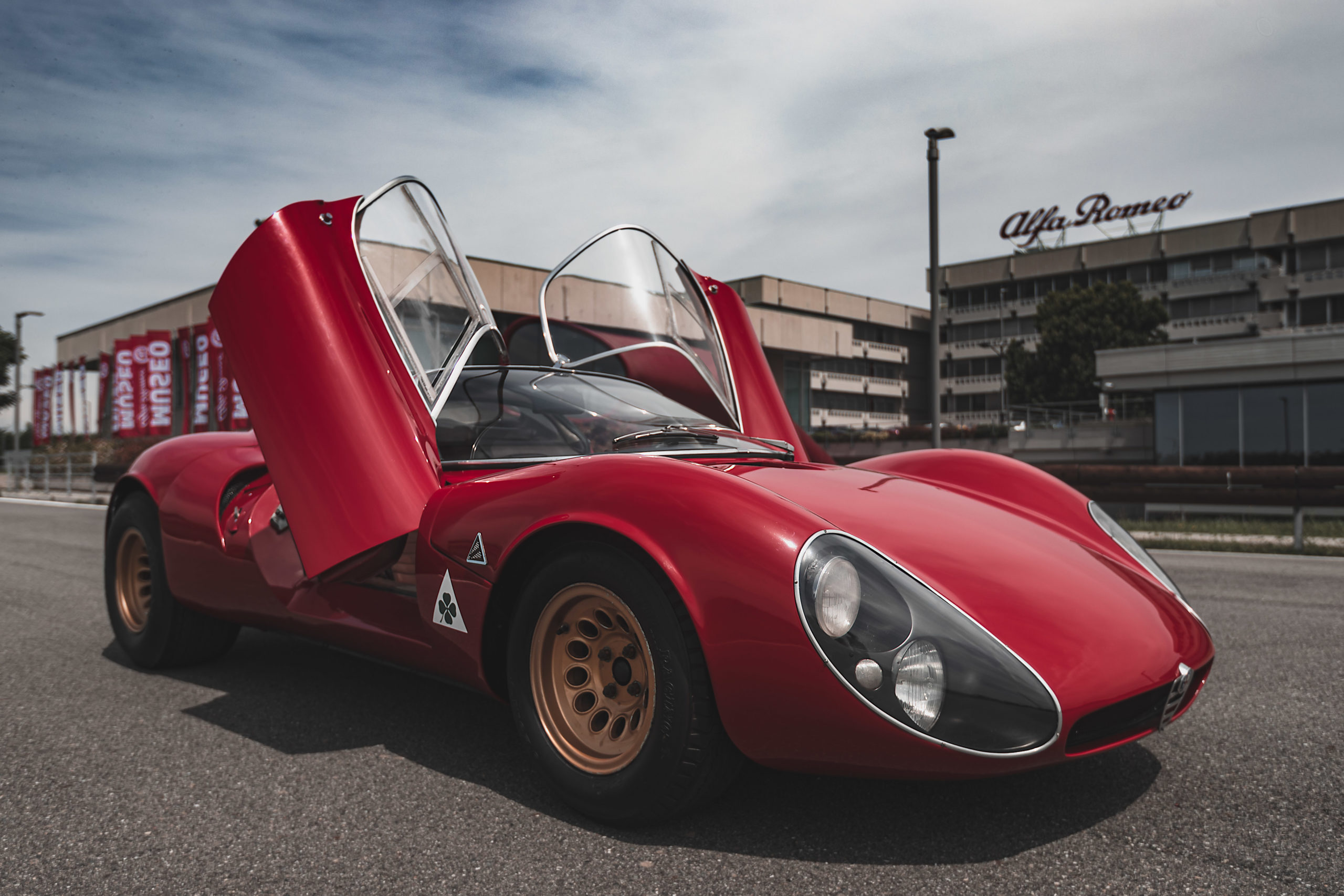
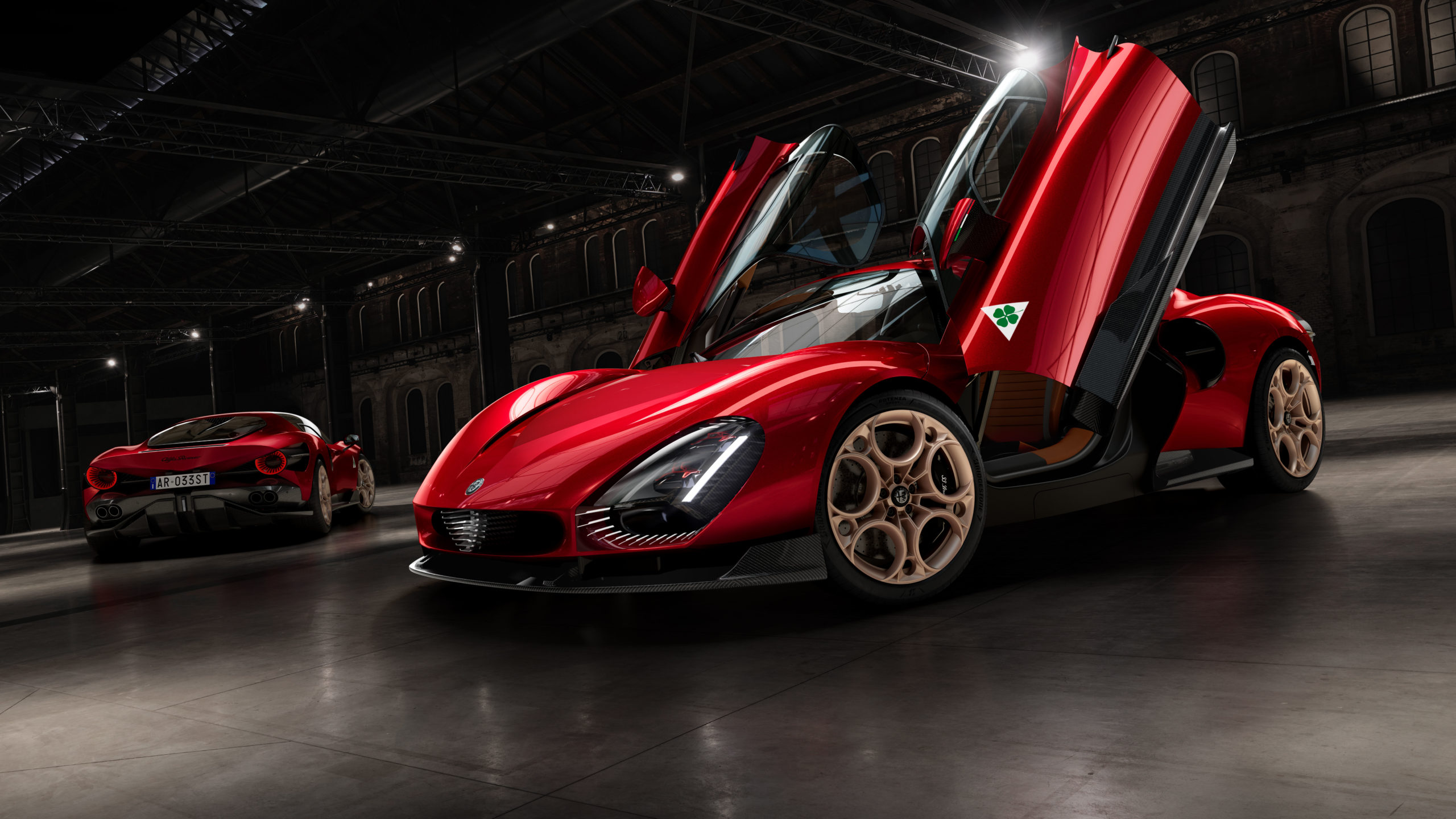
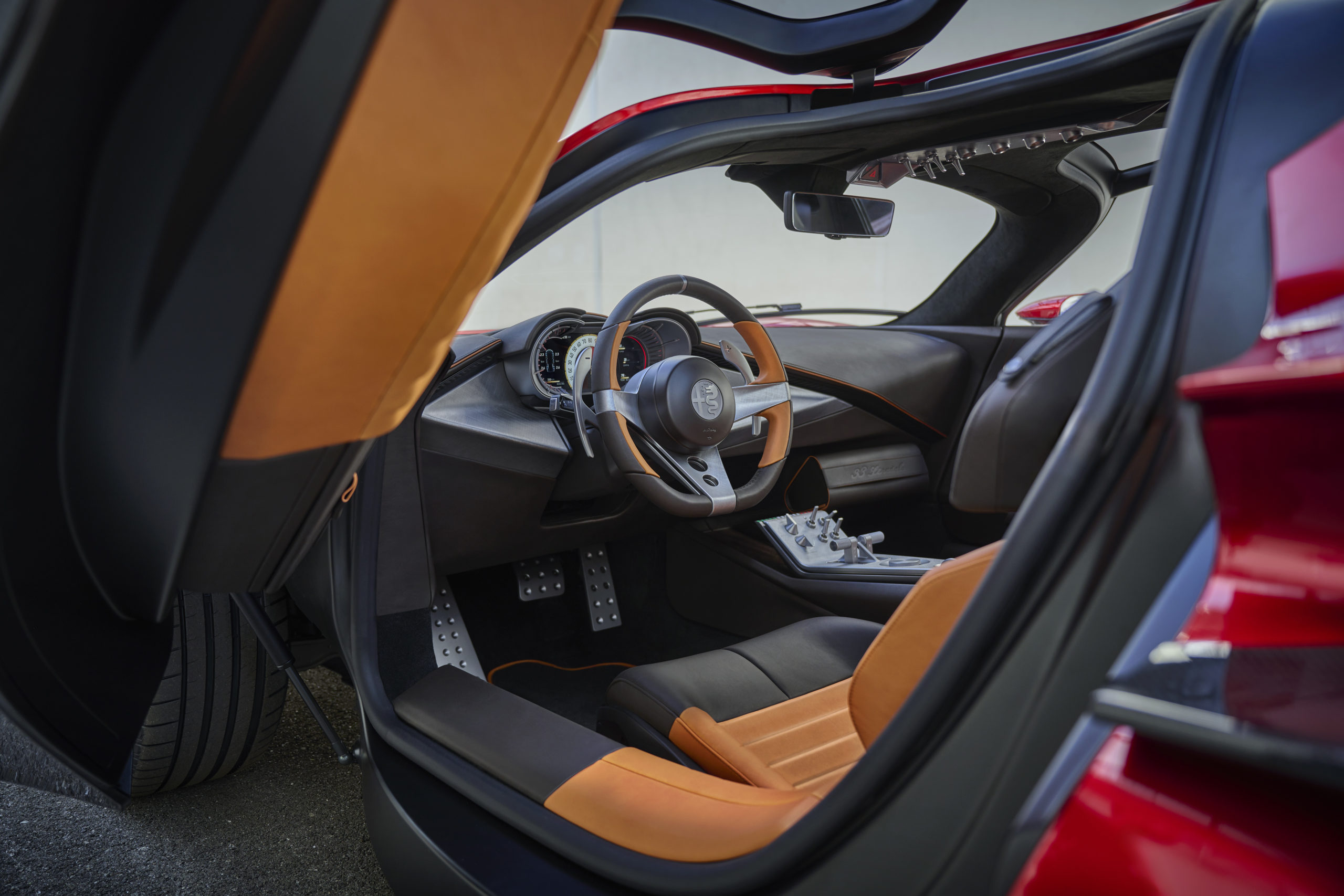
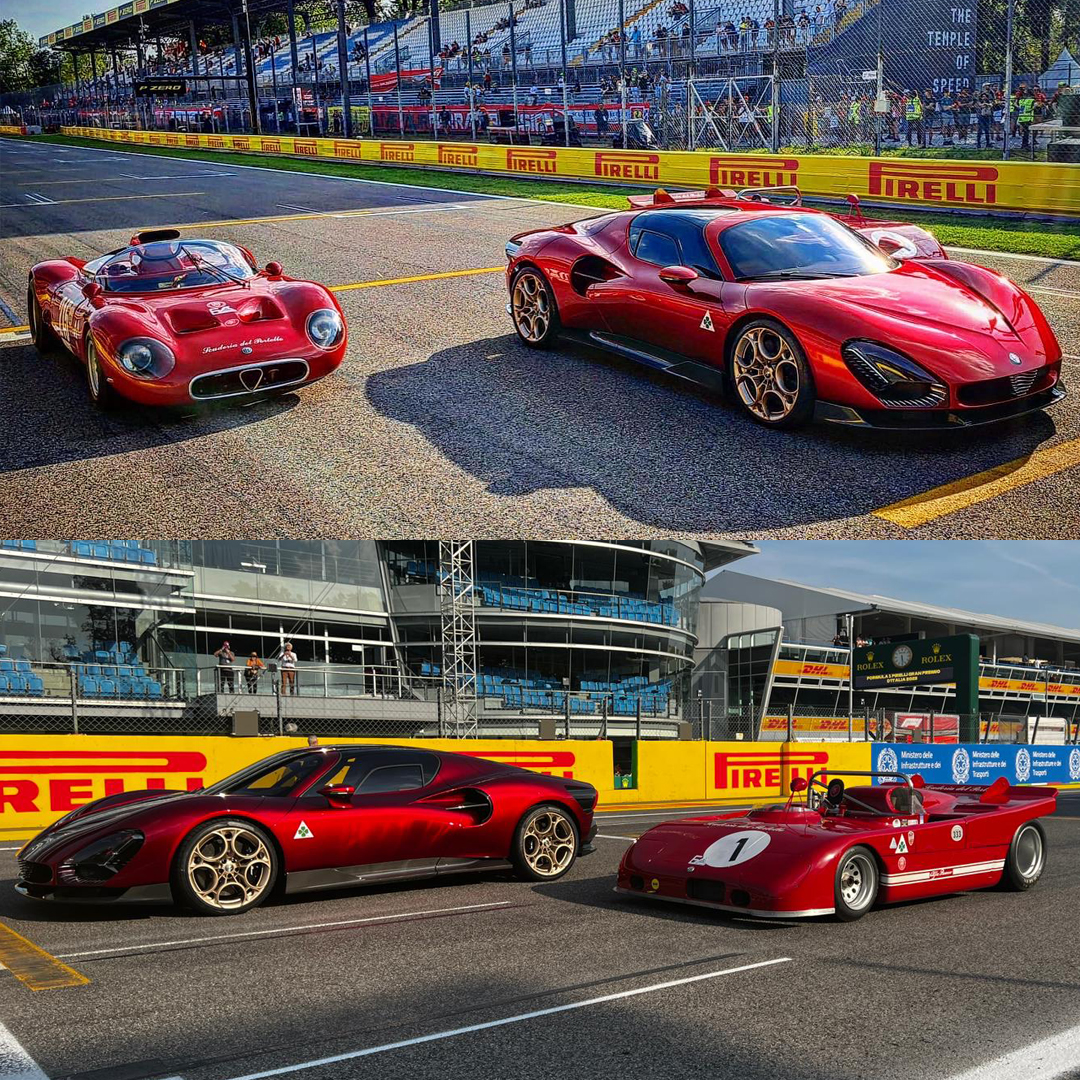
…e la storia continua!
www.scuderiadelportello.org

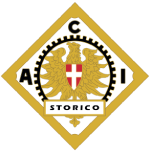
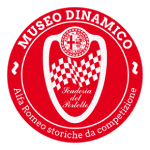
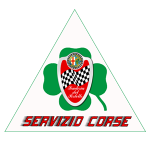
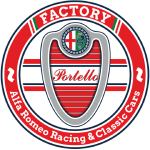
Comments
0